Studying for an academic degree in Animal Welfare is hard. It’s emotionally draining to read about animal suffering, the assignments are tough, the referencing dull. But working hands-on with vulnerable animals? As I recently found out, that’s a whole other level of challenging.
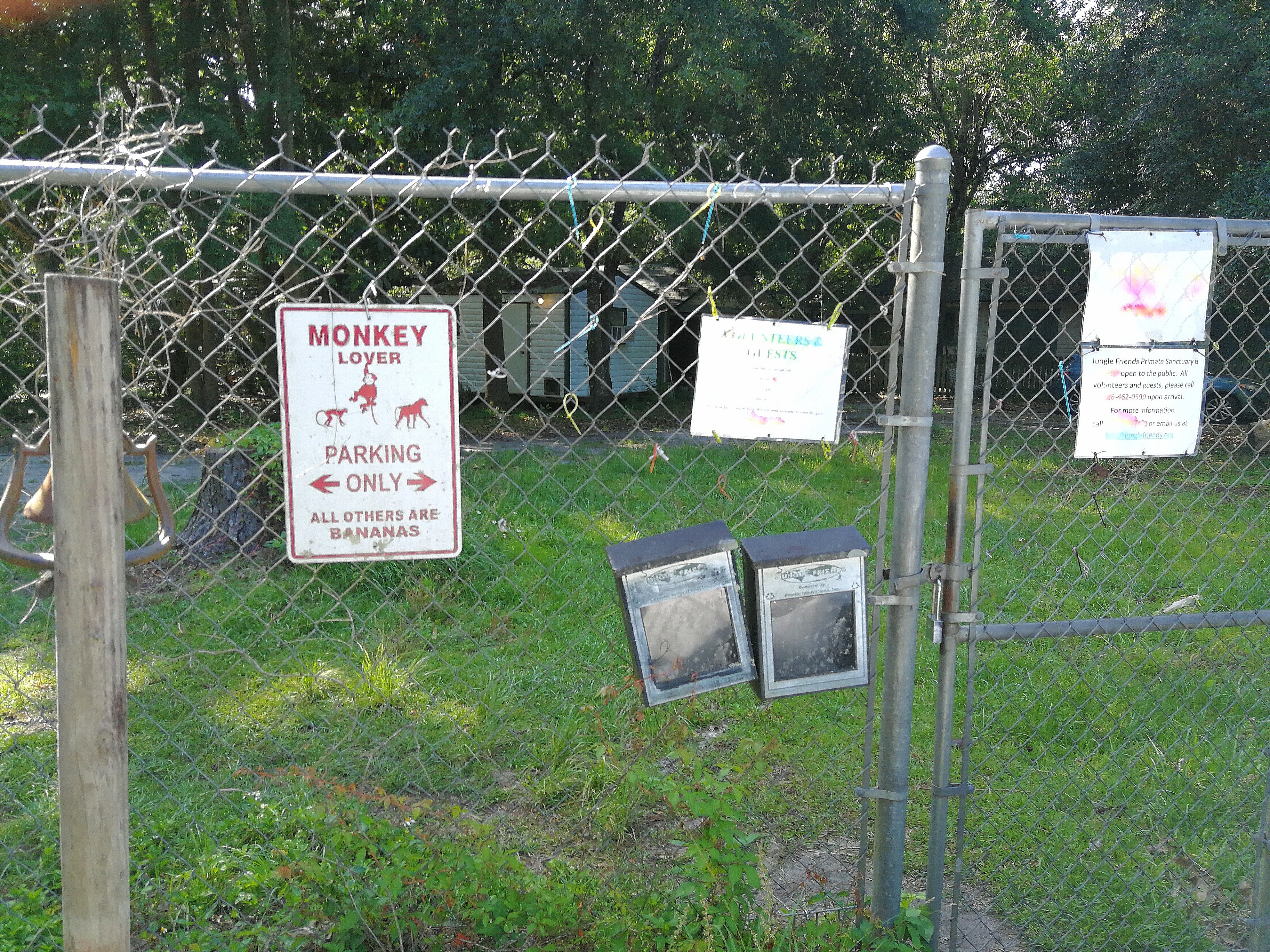
My publishing company have wanted me to go out to Gainesville in America for a while, given many of my entomology and veterinary authors are based at the University of Florida. So when I stumbled upon Jungle Friends Primate Sanctuary on a vegan jobs noticeboard, I jumped at the opportunity to combine a work trip with the fortnight of animal-related volunteering I’d hoped to do this year.
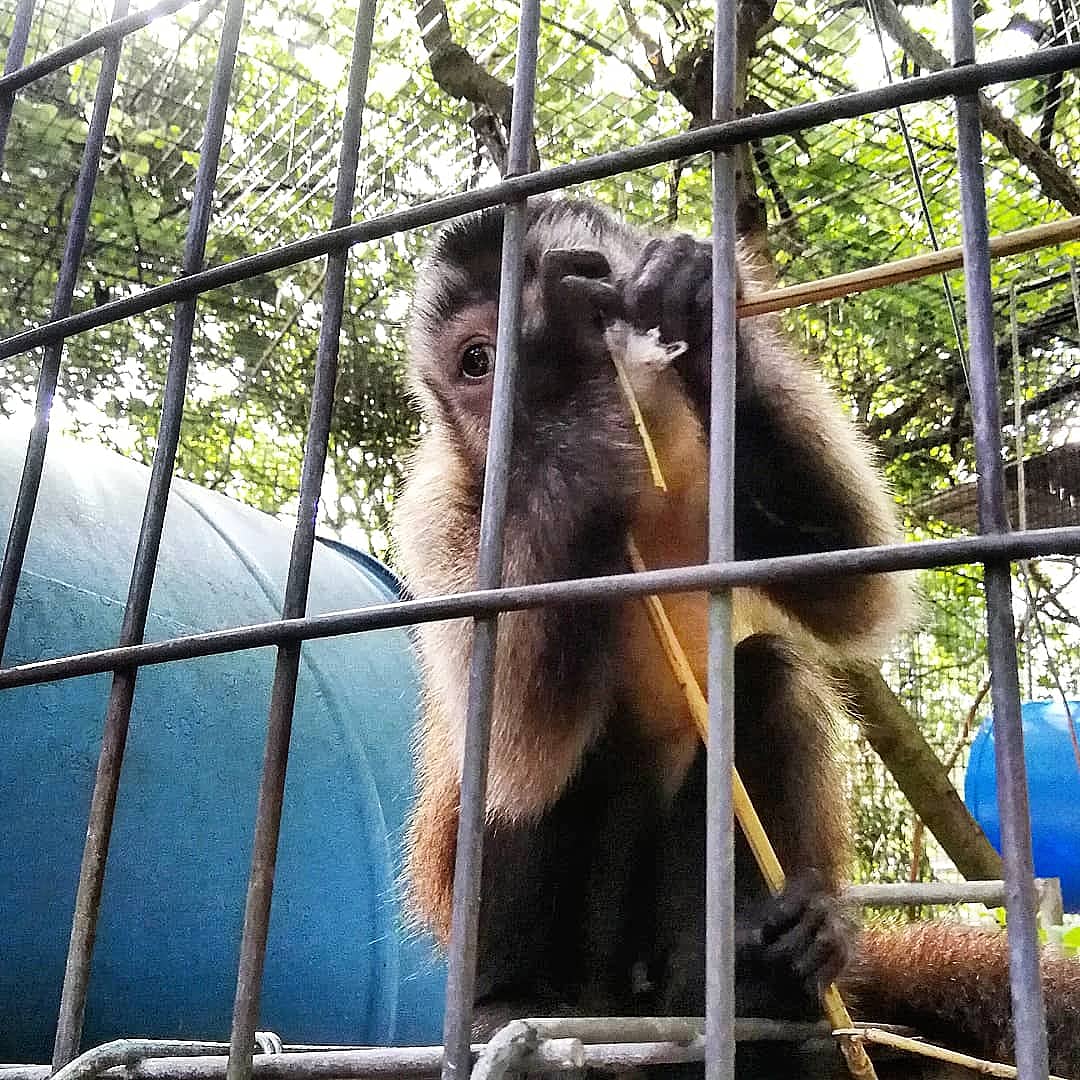
Jungle Friends was founded by Kari Bagnall, a remarkable woman who happens to be part of Jo-Anne McArthur’s Unbound Project (celebrating women at the forefront of animal advocacy). Bagnall created the sanctuary to offer a permanent care home to over 300 New World Monkeys: from the capuchins and spider monkeys that inhabit ‘Kansas’ (each area of the sanctuary takes its name from The Wizard of Oz) to the tiny marmosets and tamarins in Munchkinland, and the energetic squirrel monkeys in Magical. The monkeys are all either retired from laboratory research, ex-pets, or victims of the illegal wildlife trade. Many have deeply sad, traumatic background stories but Jungle Friends gives these damaged individuals a second chance of happiness, introducing them into ‘almost wild’ habitats and pairing them with companions whenever possible.
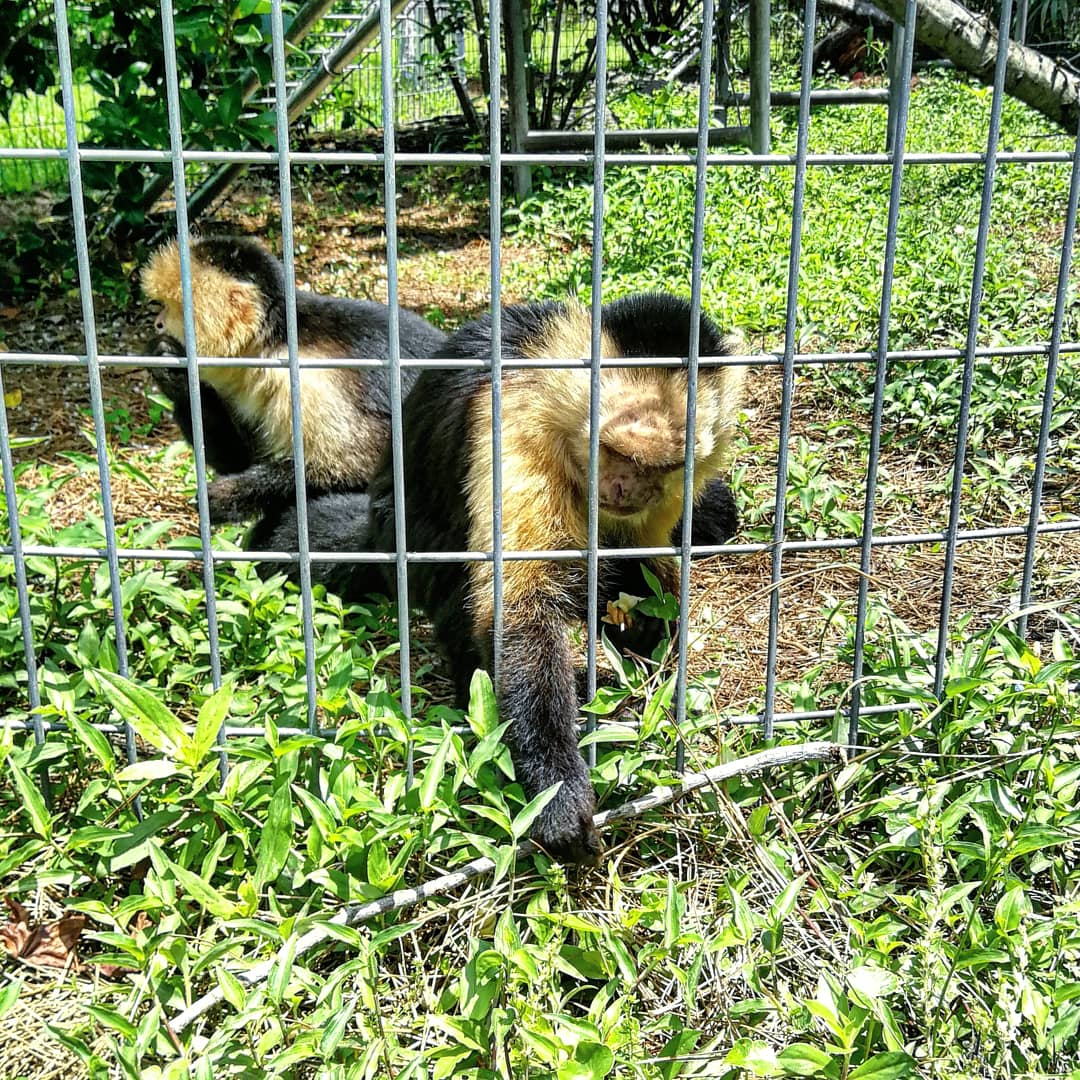
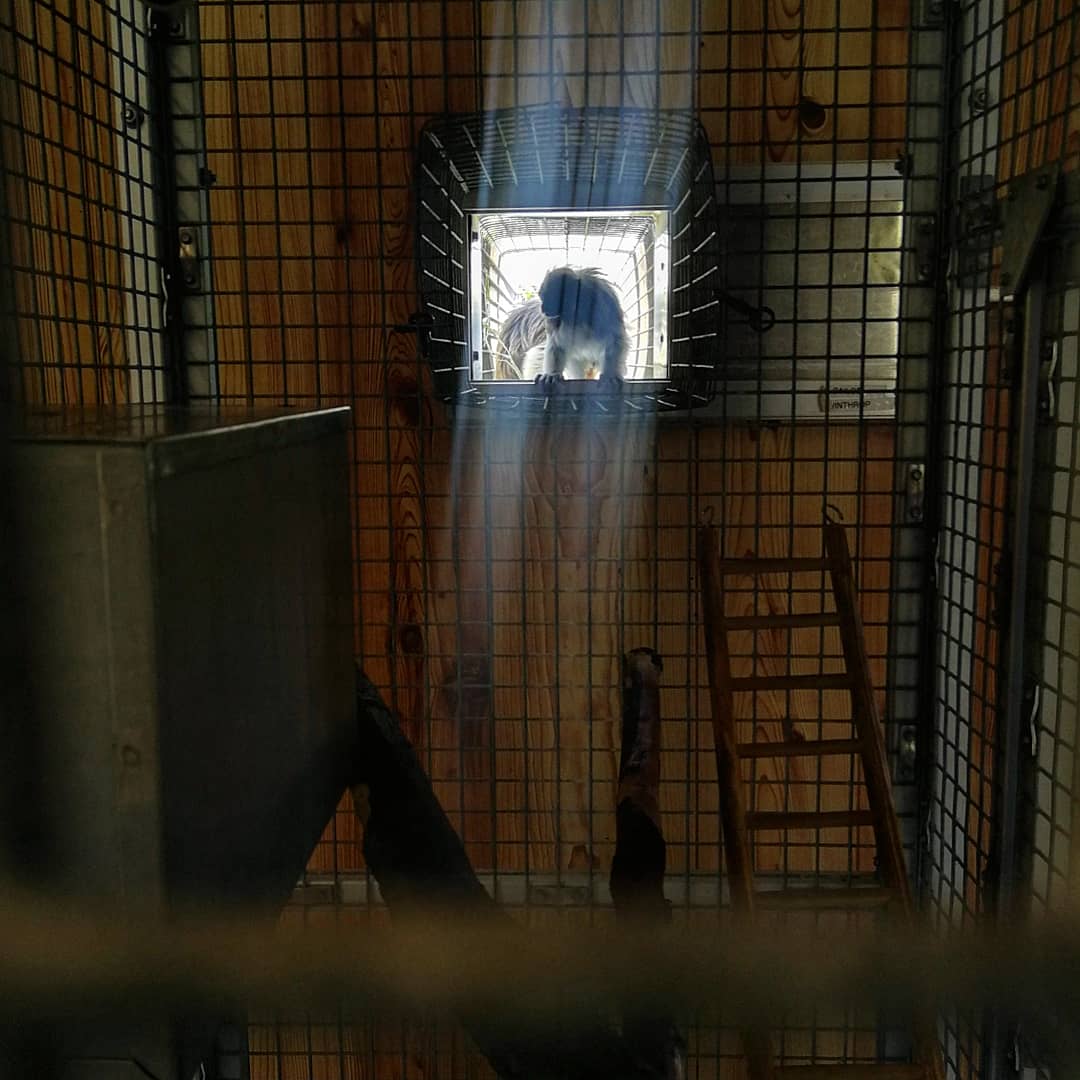
The spacious “live habitats” are specifically designed for each primate species, built on natural ground with dirt for digging in as well as grass and edible ground cover. Trees in and around the habitats give the monkeys shade and, of course, things to climb. Every enclosure also has bamboo, numerous toys and artificial climbing structures, hammocks, and non-toxic plants for eating, playing and hiding in – and they provide their own ecosystem that houses insects and small animals which supplement the monkeys’ diets. Watering systems help them cool off as well as giving hydration. I never got to help build a habitat but it was hot enough in May to realize that those cooling systems are essential, for the human workers as well as the primate residents.
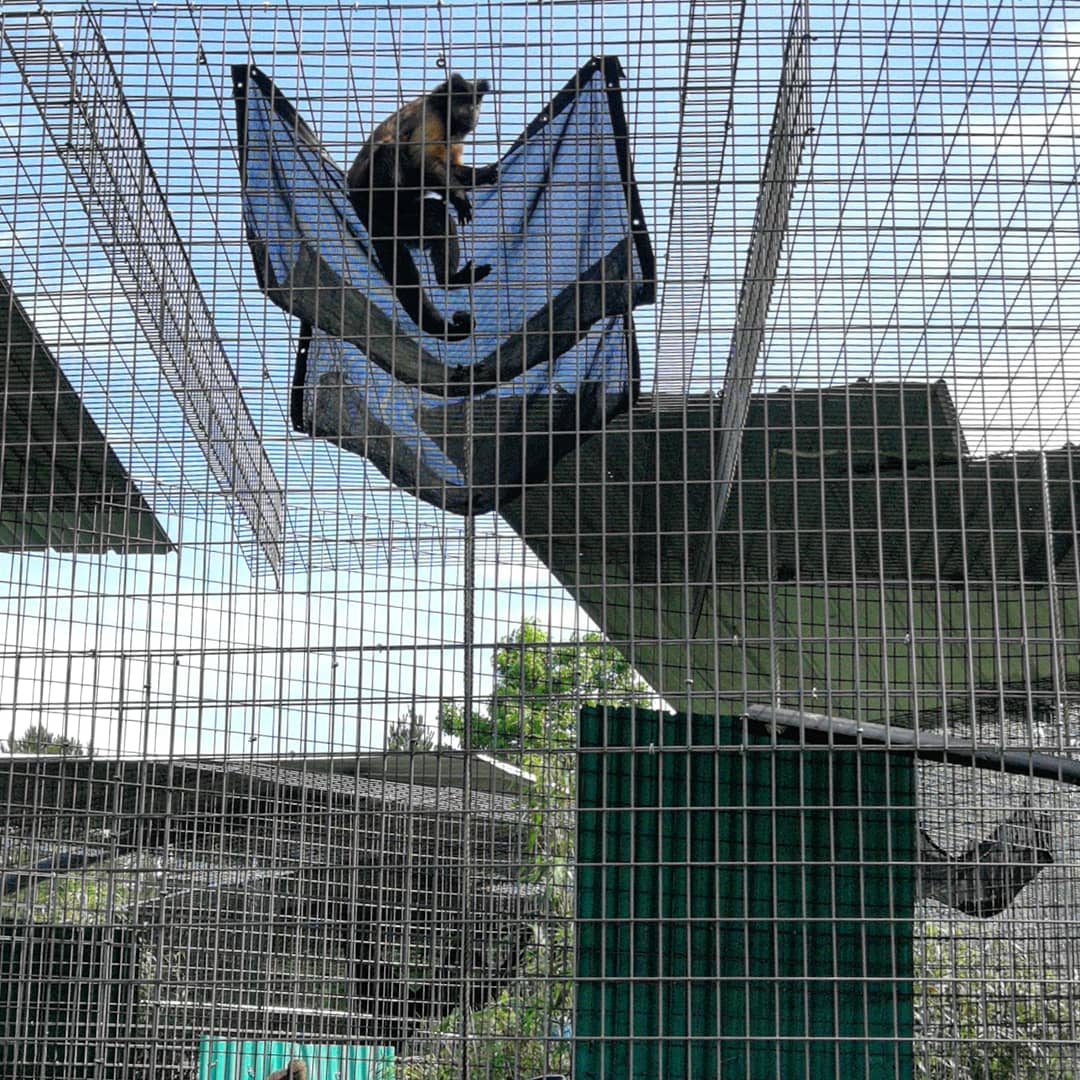
One of the most ingenious things about the habitats is the overhead wire corridor system that allows the monkeys to move freely between their enclosures without ever having to have human contact. If an enclosure needs to be cleaned out or fixed, the corridor entrance can be barred so the monkeys can’t get in while you work. They can also be initially socialized with bars between them, for their own protection, before being housed safely in compatible pairs. There are slots along the corridors where food bowls can be inserted in and removed without ever intruding on the primates’ territories.
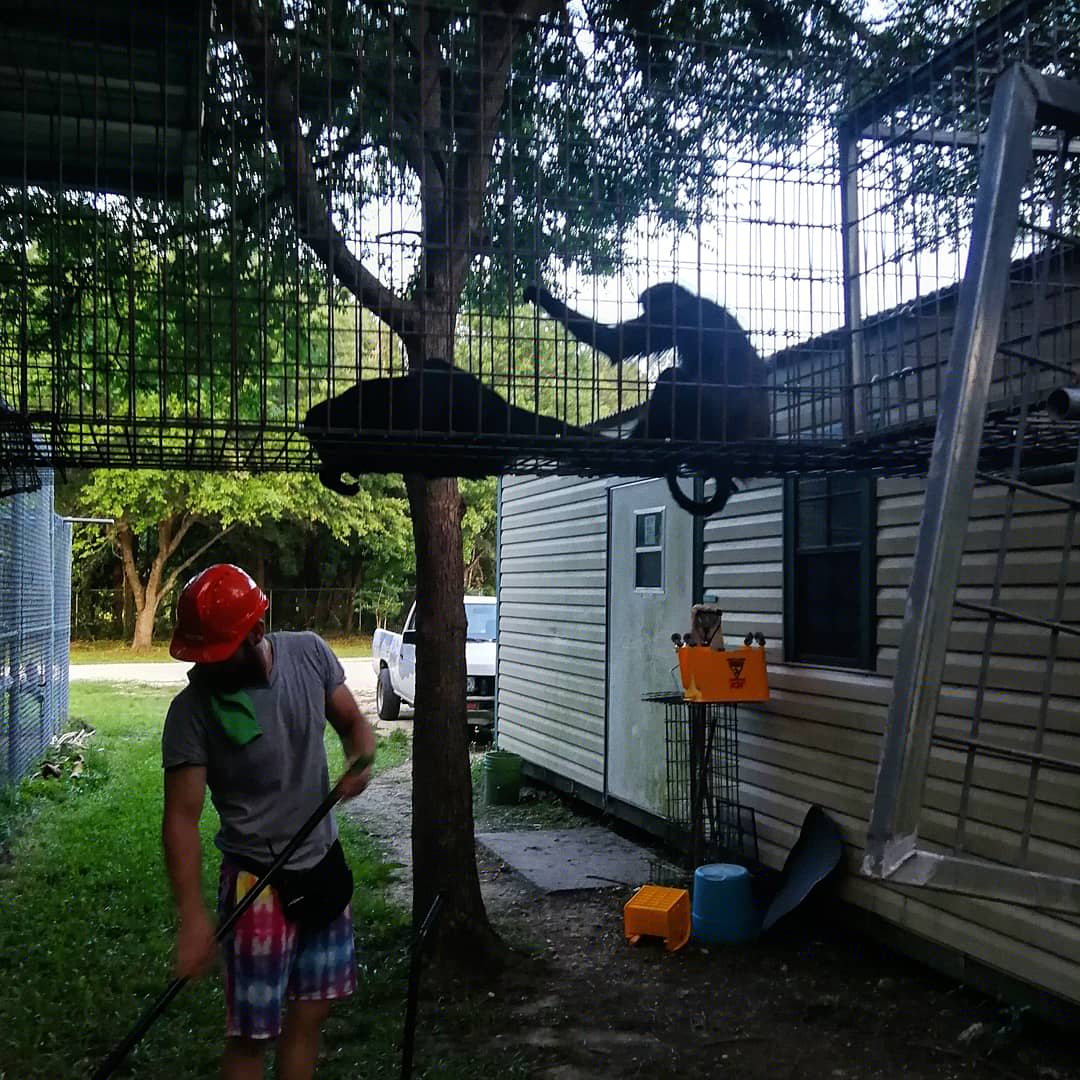
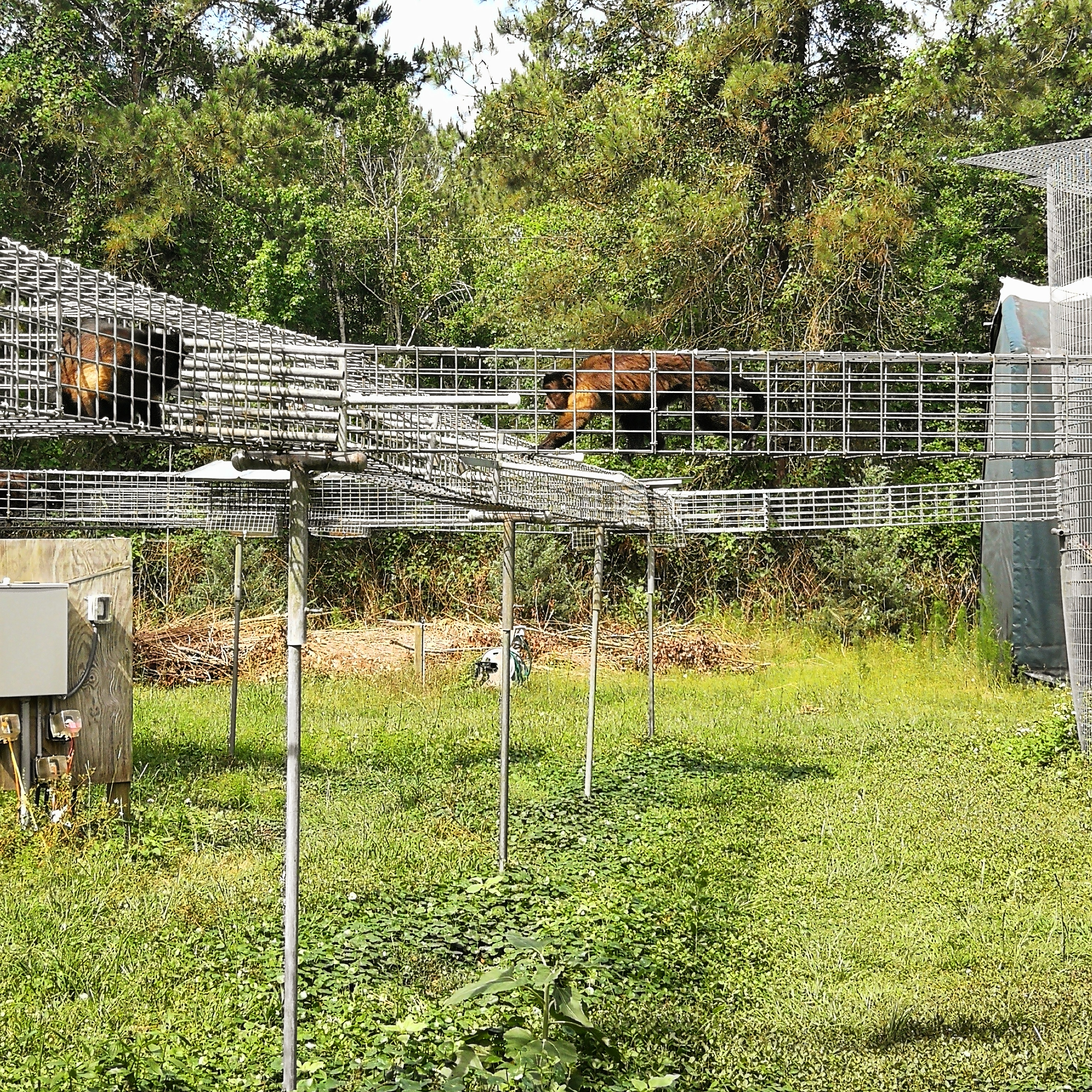
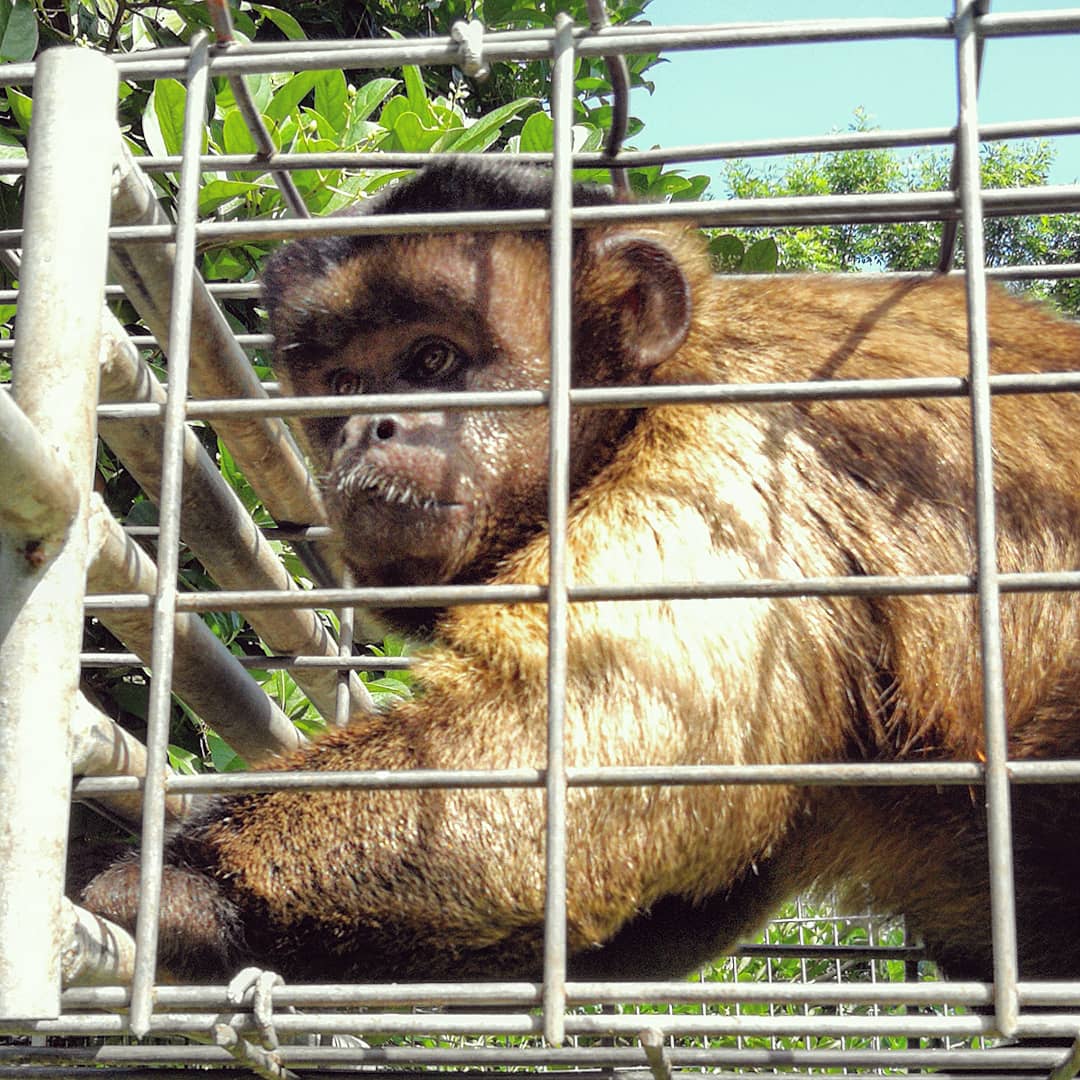
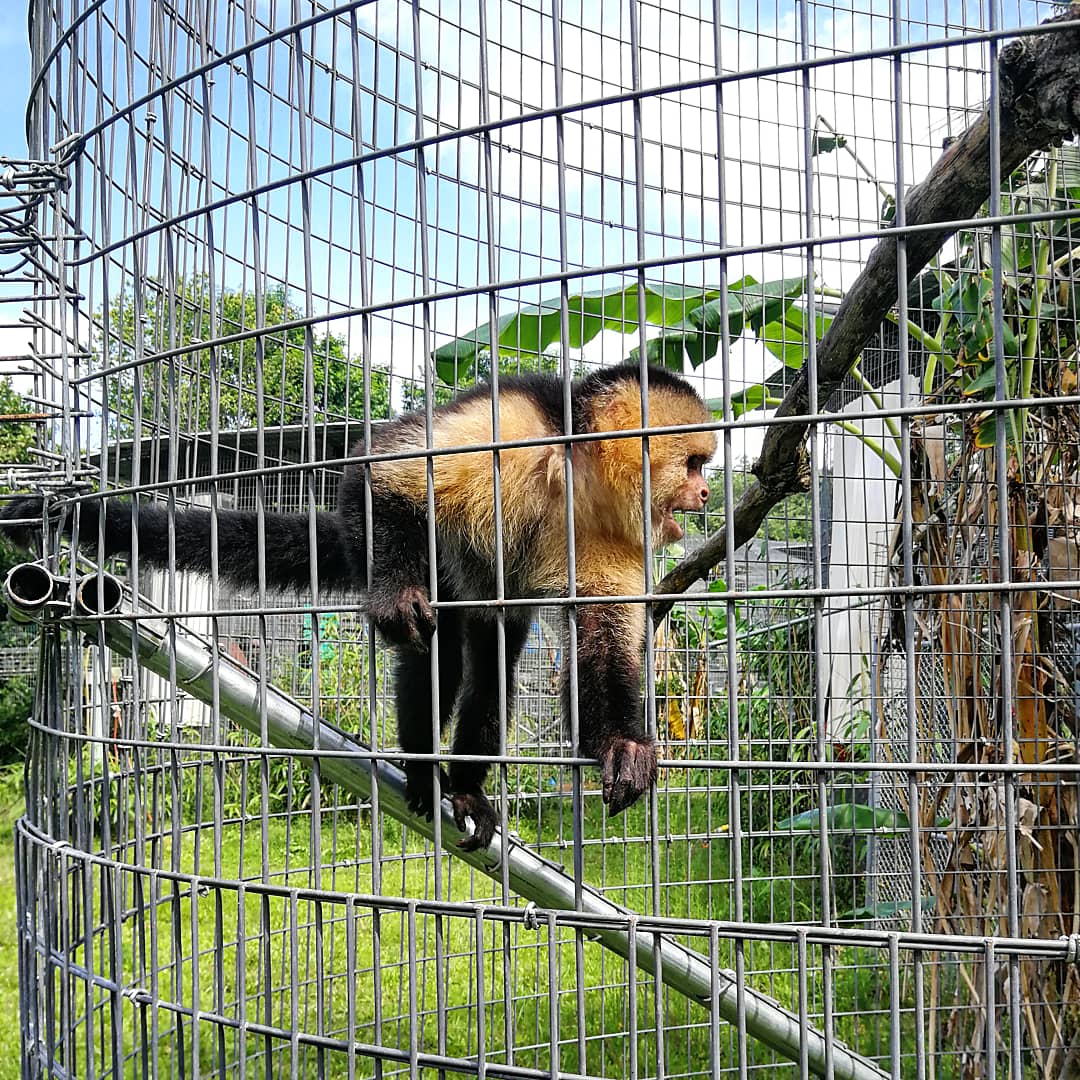
Occasionally a baby monkey will arrive at the sanctuary. In these cases every effort will be made to match the child with a surrogate mother, a female resident who will raise him or her as they would in the wild. Little Daisy, below, is a new baby who arrived just a week or so before I started my volunteering and she will soon be introduced to an adult female capuchin ‘mother’.
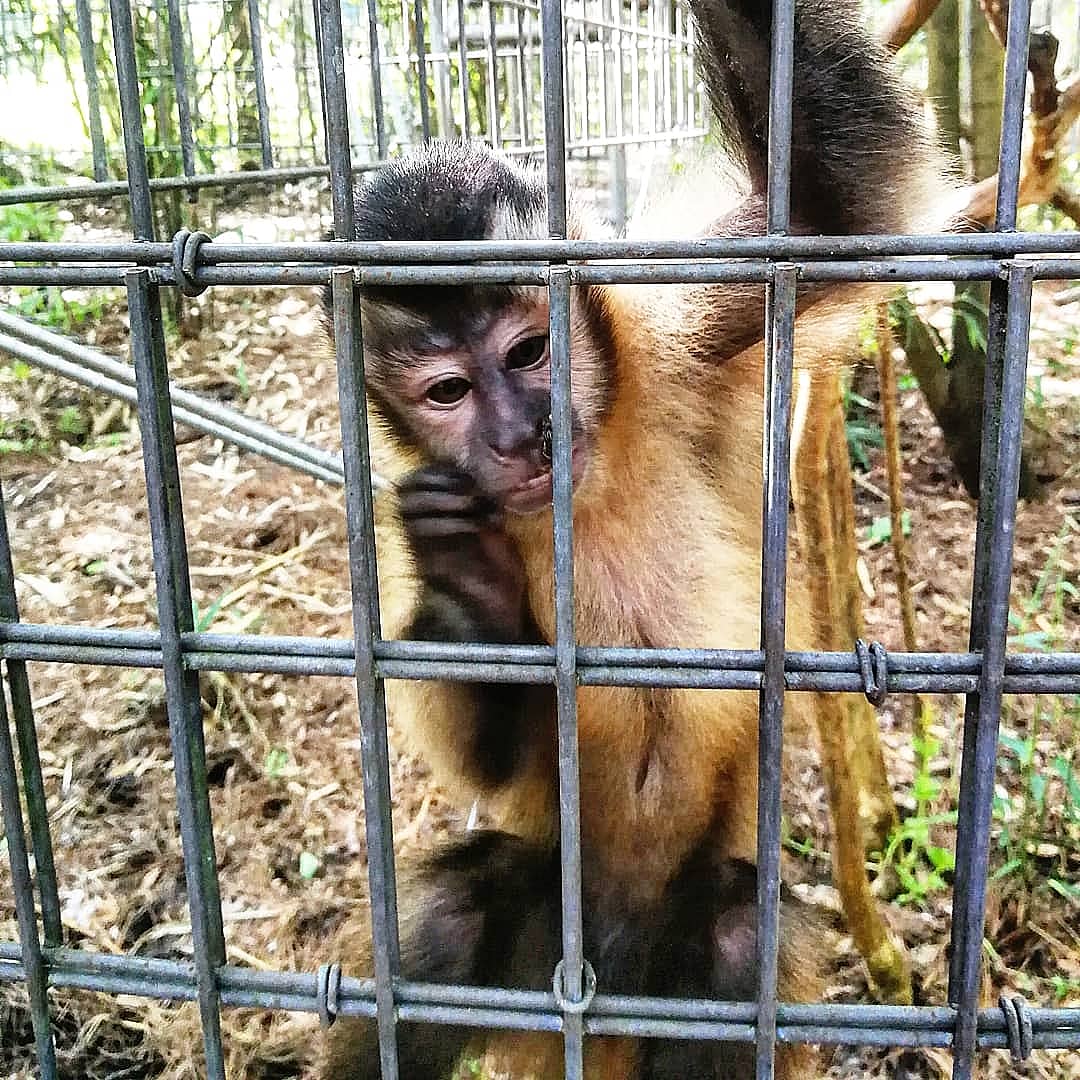
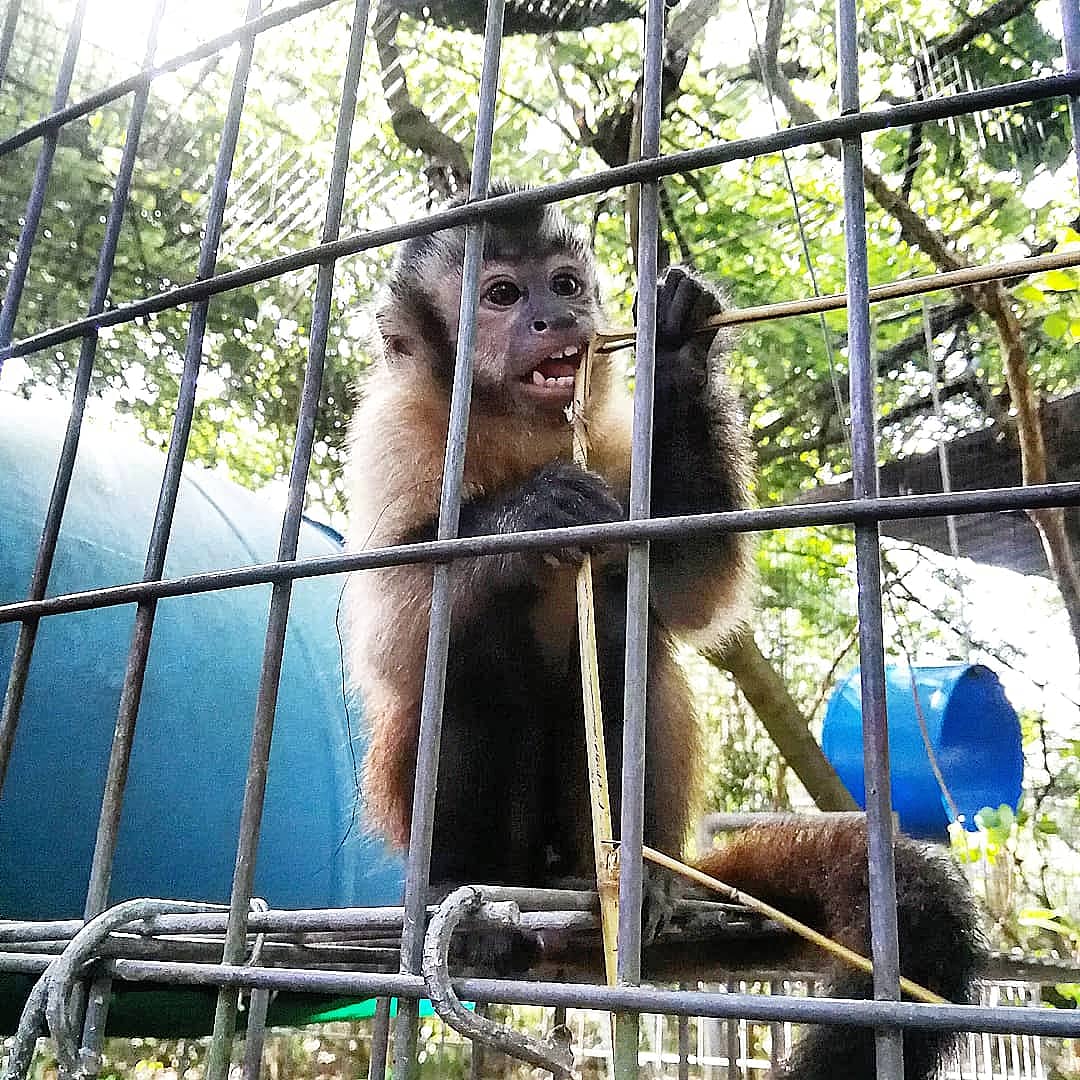
Day-to-day care of the monkeys is demanding: the cycle of food prep, feeding, scrubbing dishes and cleaning up is relentless and undeniably menial. There were times when I left the sanctuary with callouses on my palms from non-stop veg chops, or legs blistered with insect bites from being outside at dusk raking up dropped food. There was never a night when I didn’t get into my car drenched in sweat, from mopping primate poop off the floors of the indoor habitats or scouring metal food bowls in the Floridian heat. However, while the work is repetitive, it never felt futile. The rewards are immediate. There’s no way you can resent preparing food that makes a squirrel monkey scream with excitement or a blind capuchin squeal with joy.



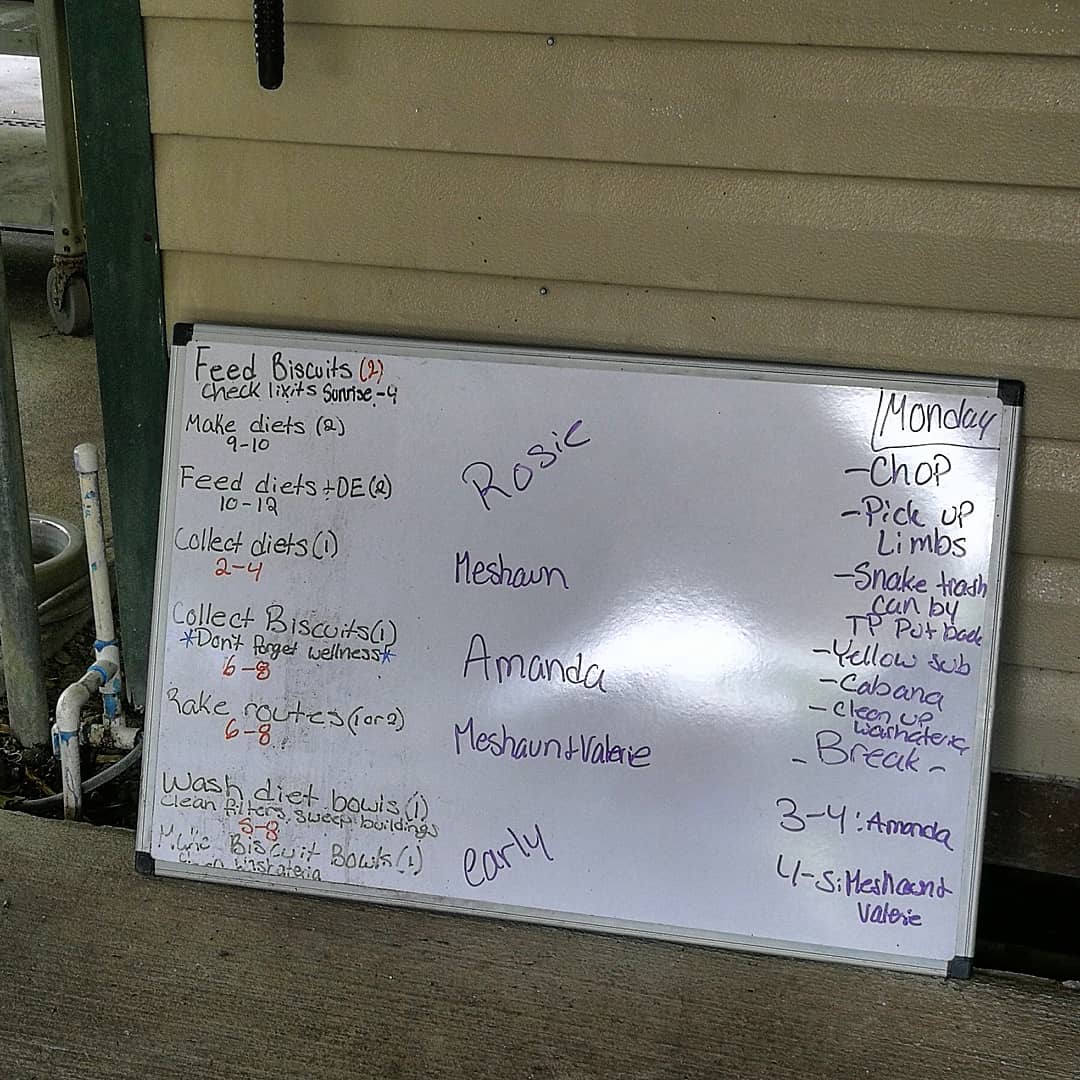
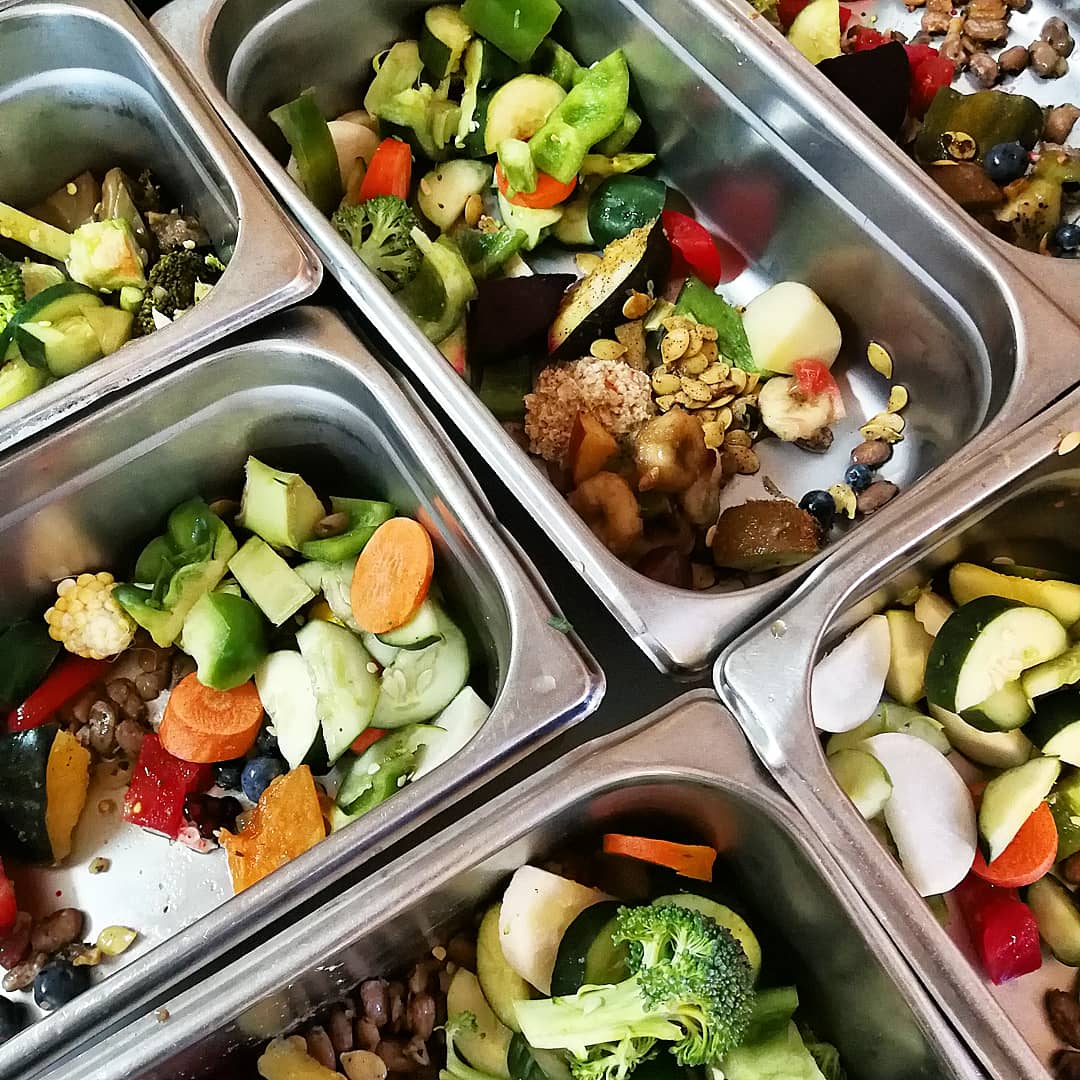
Fed daily watermelon, tomatoes, green veg, homemade stew, pasta, oats, potatoes and cinnamon-covered squash, the monkeys eat better than I ever will, which is okay by me. They also have tailored diets to meet their particular needs: most of the ex-pets have had their canines, or even all their teeth, removed, so they can only manage soft foods. Lots of these monkeys are also diabetic because they were fed nutritionally poor diets growing up in captivity, so they have less fruit and carbs. And some monkeys are old or simply fussy, so they get extra good stuff, like watermelon. Every other day the employees do a huge veg and fruit chop so there’s always food ready to give them.
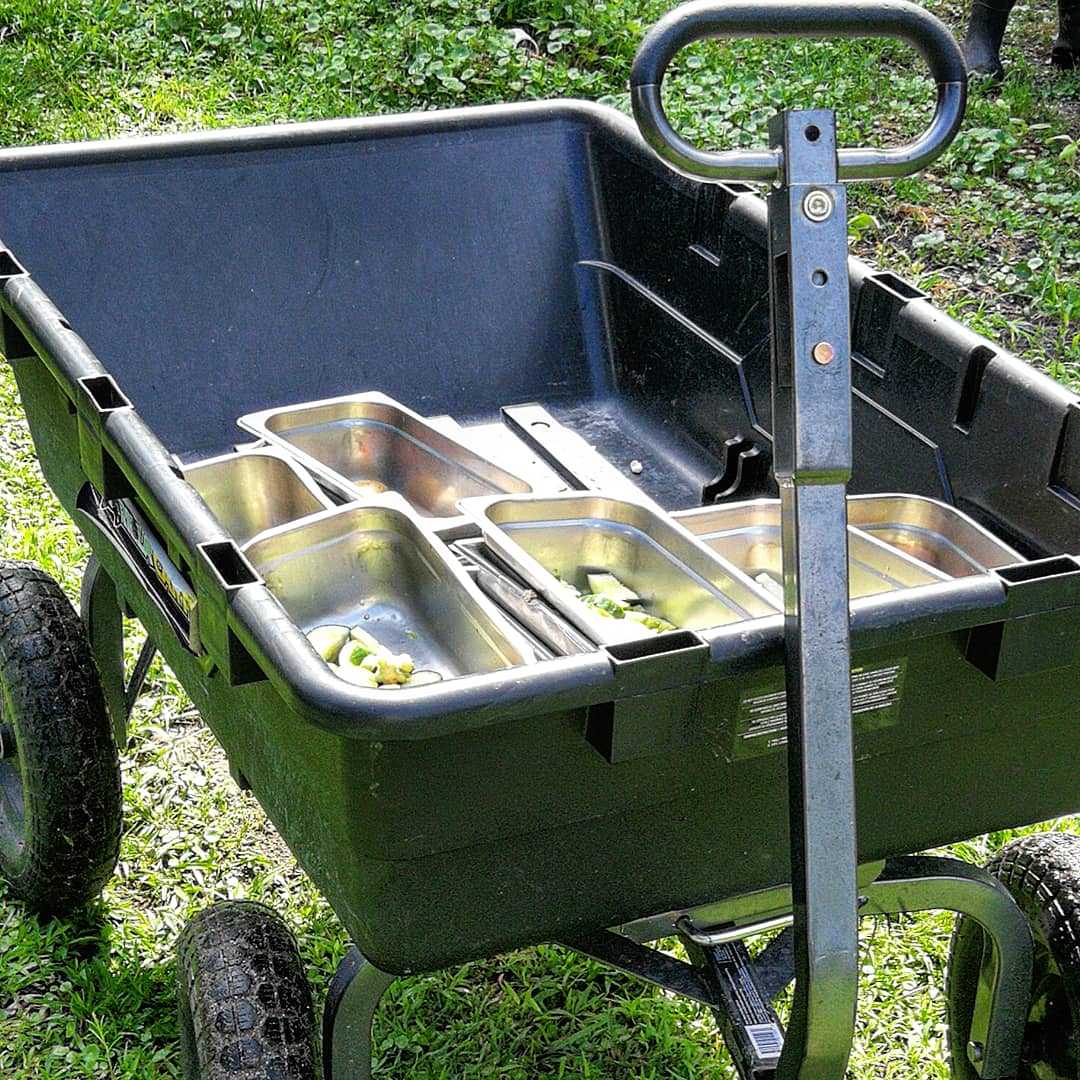
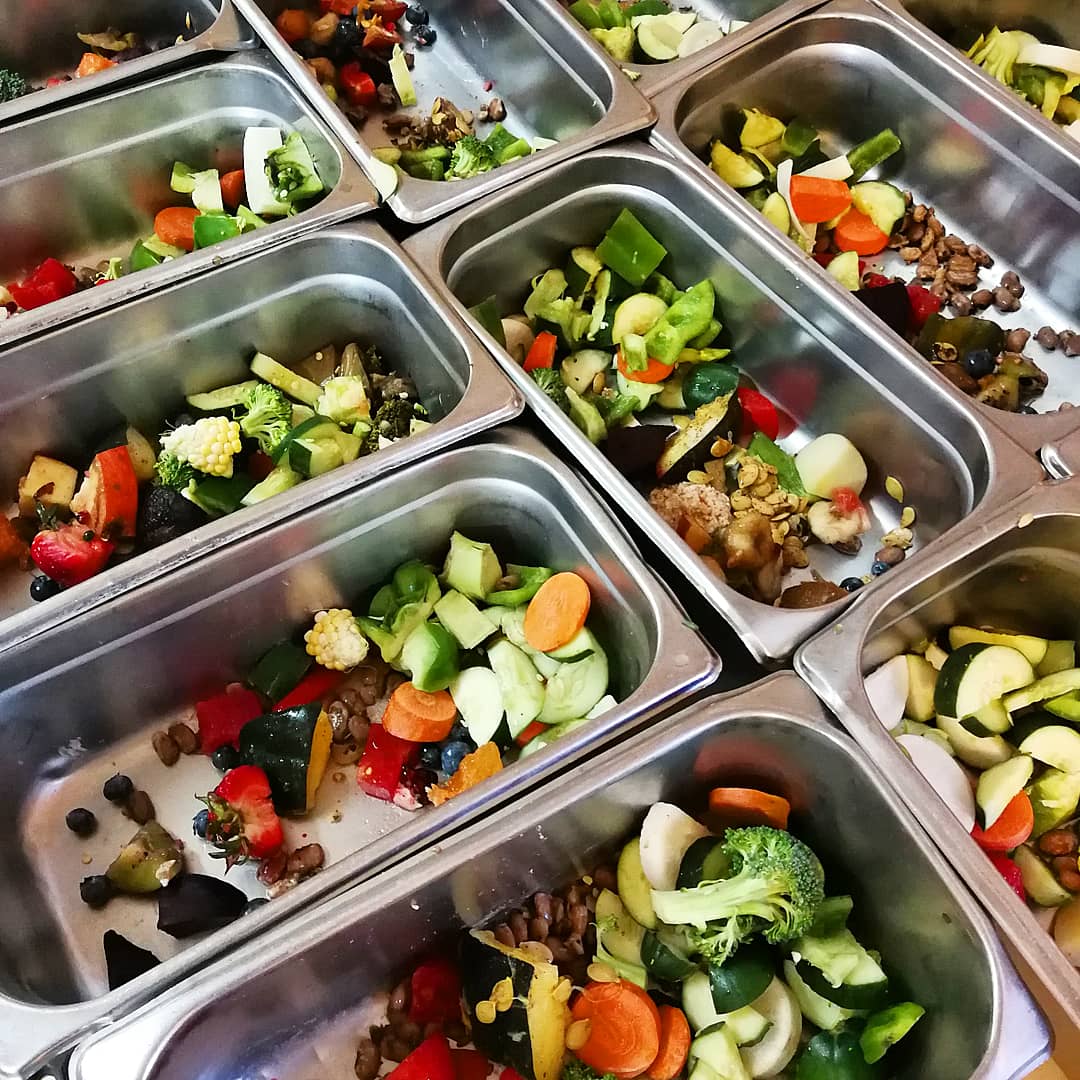
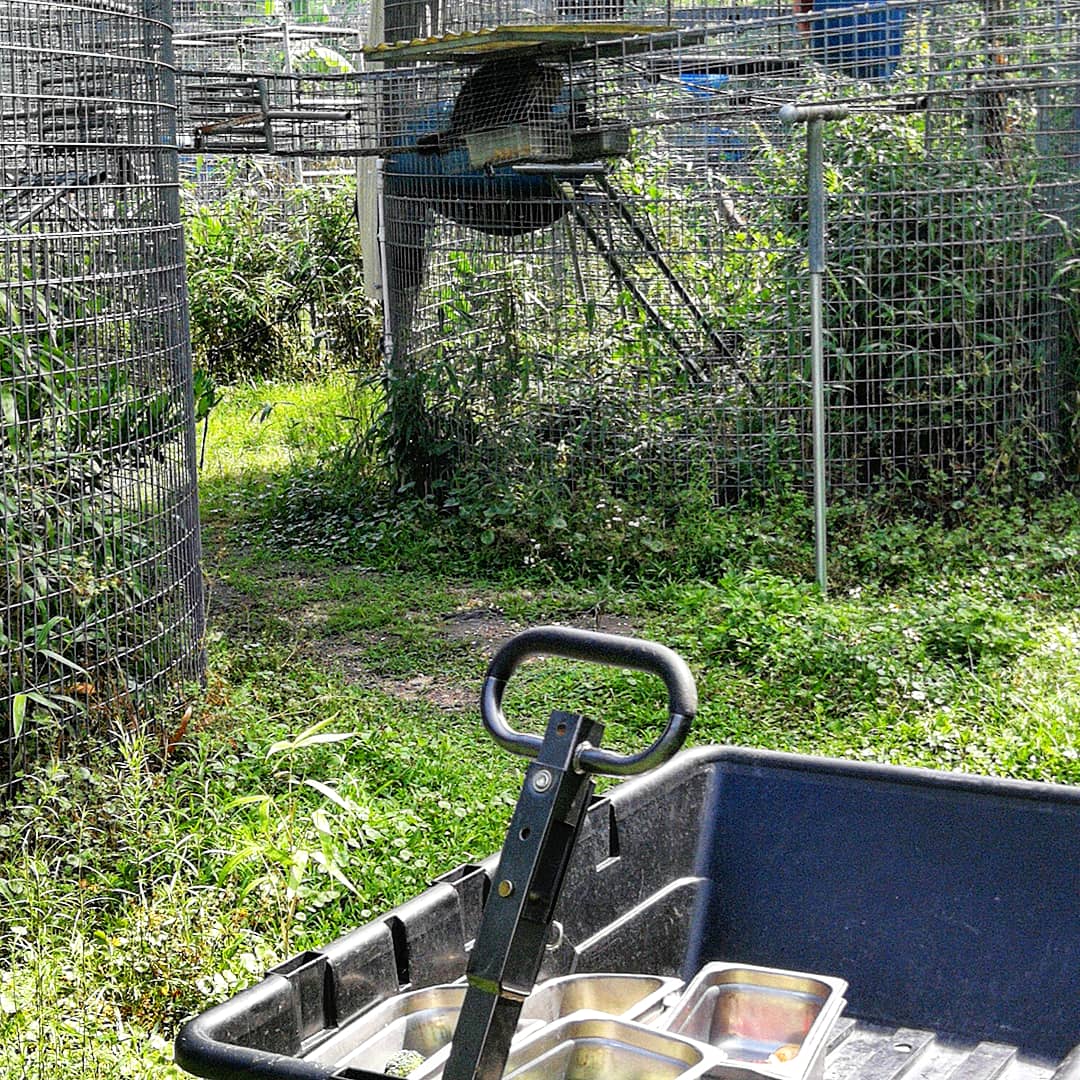
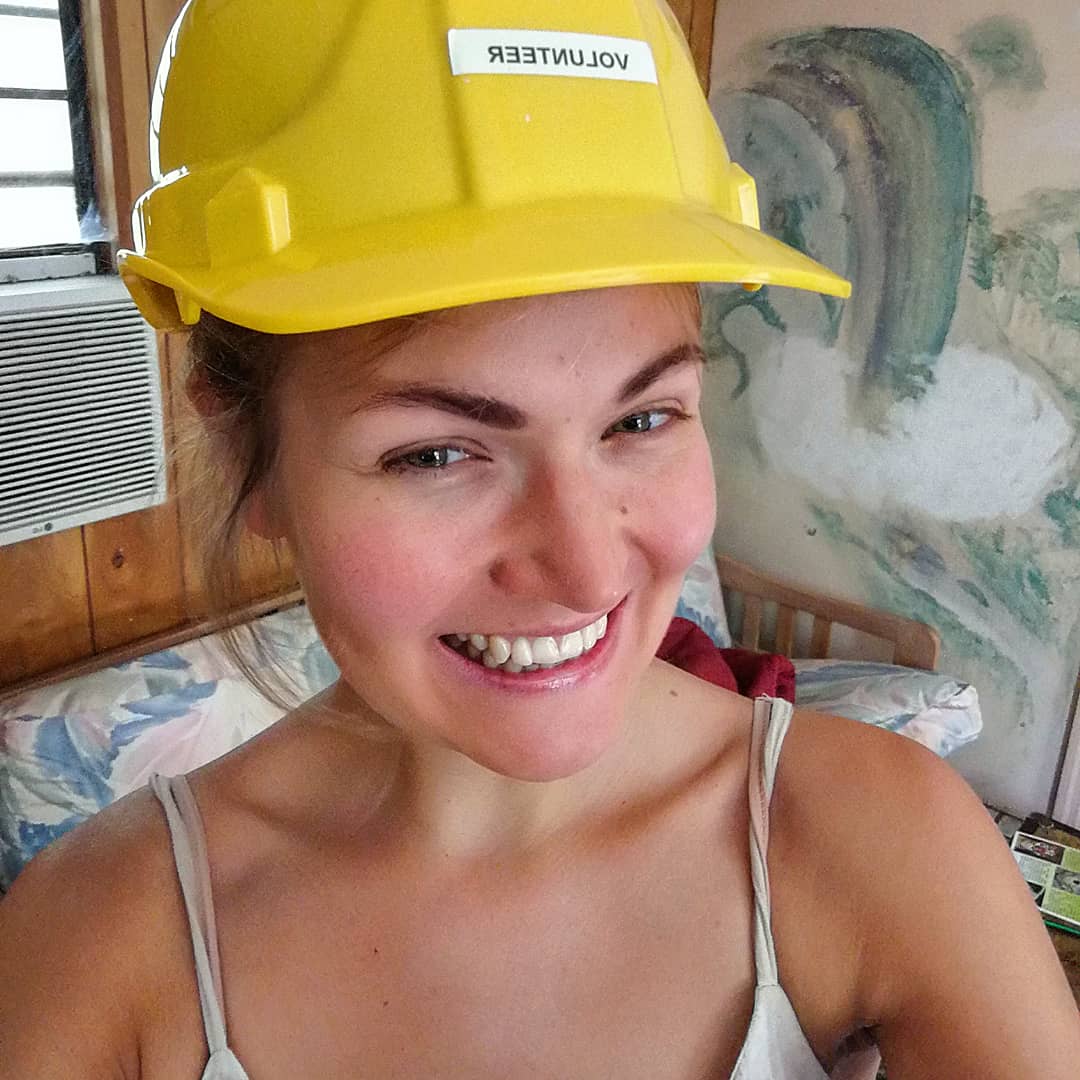
Physical contact with the sanctuary’s inhabitants is obviously forbidden to new employees or volunteers but you’re still constantly interacting. The monkeys speak to you with bird-like chirps, rattle the dividing bars of their enclosures to show you how strong they are, and lots of them flirt (I lost count of the number of times I was treated to a, how shall I put it? Physical display of affection…) You can see the bonds that develop between the permanent staff at the sanctuary and the monkeys, many who will be offended if the employee refuses to stroke a tail or tickle a tummy displayed through the wire ramps. Walking past one habitat, I watched a capuchin twirl in circles and the person I was shadowing nudged me, “Quick, spin back at her or she’ll be upset with you forever!” I also had biscuits and sweetcorn thrown at my face a lot.
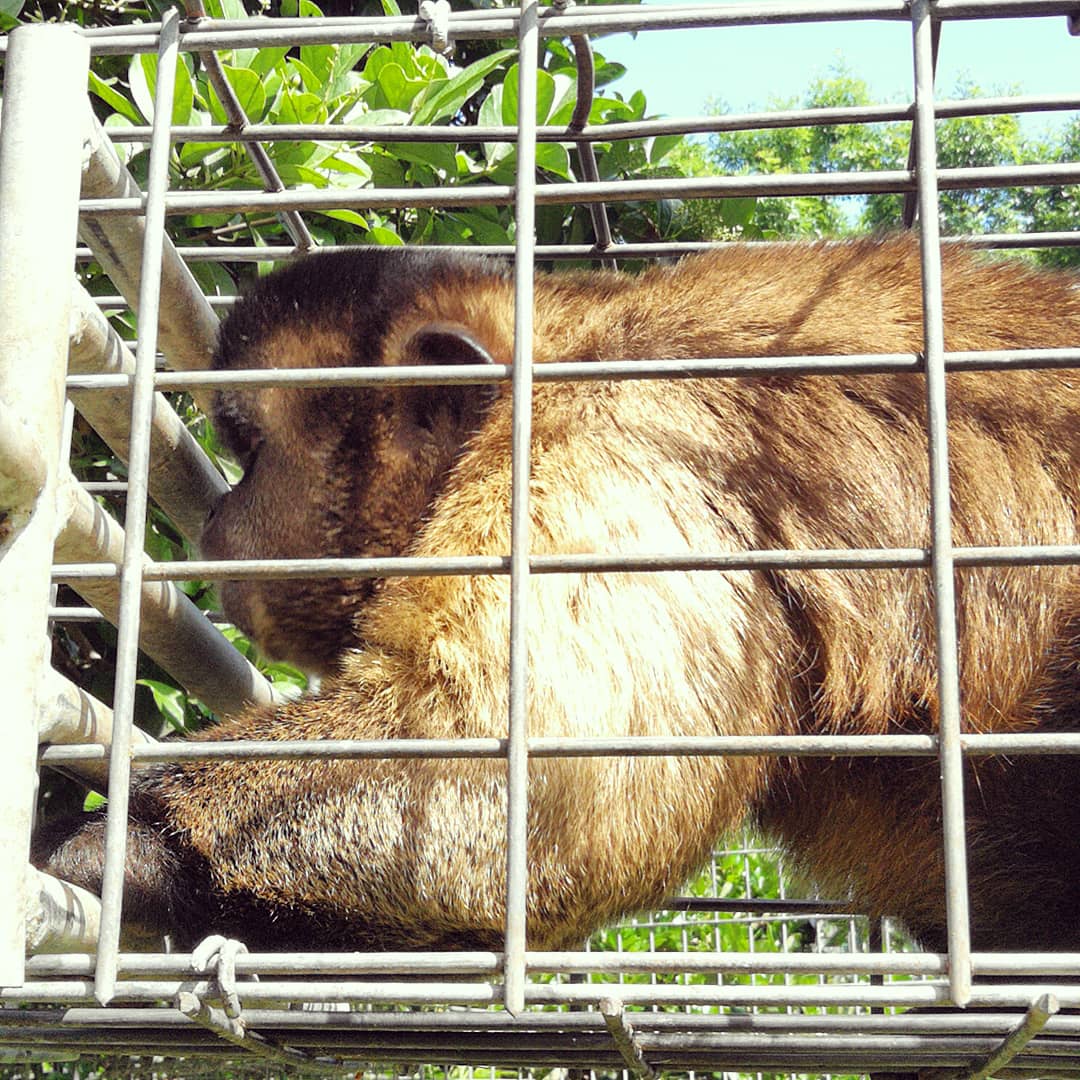

In another area of the sanctuary are the squirrel monkeys, my personal favourites. Native to Central and South America, these ginger fireballs bounce around their indoor and outdoor habitats, eager to get your attention. Little Rico, another ex-pet pictured here, is less than a year old and already one of the biggest personalities there.
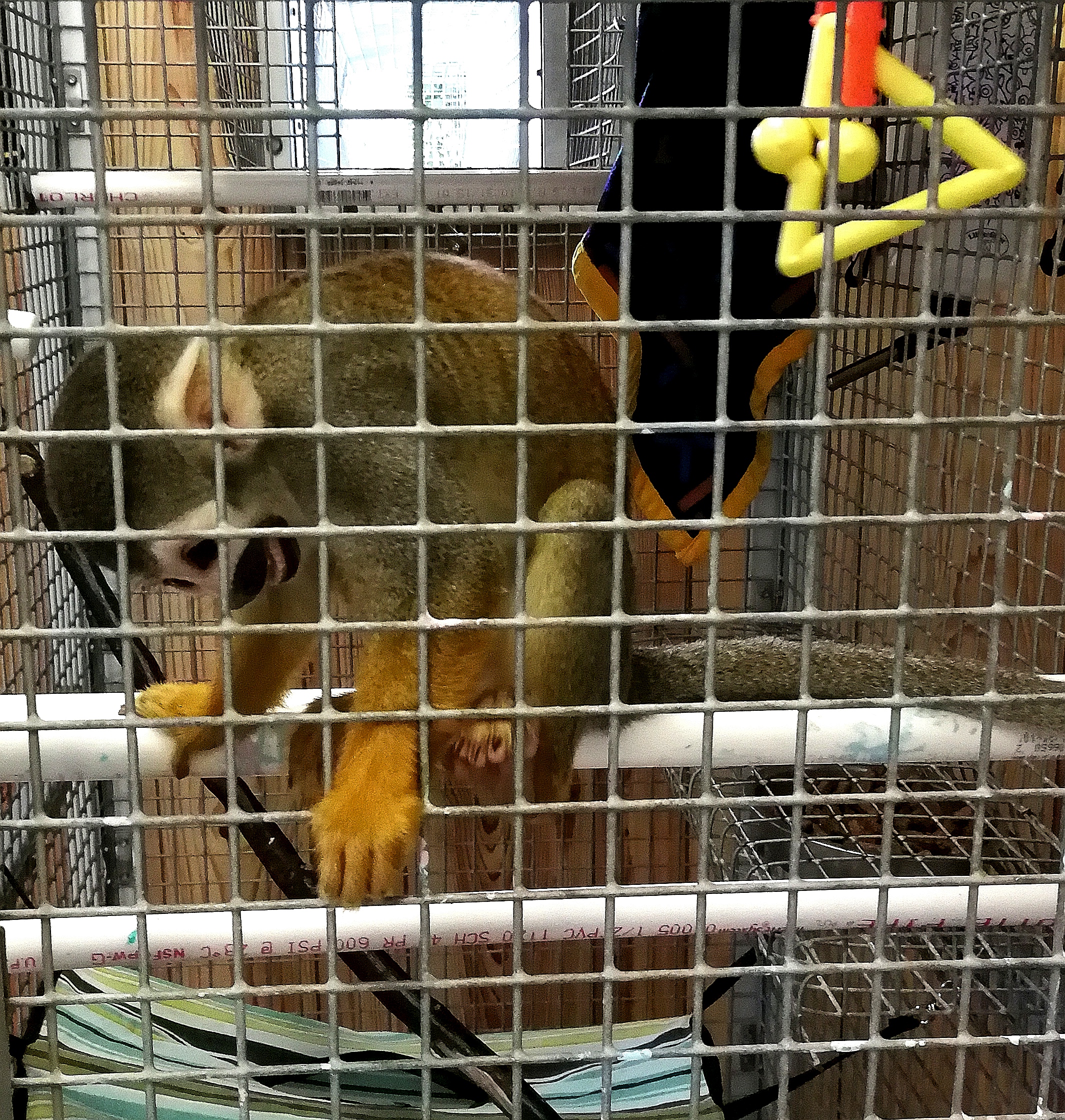 Jungle Friends have recently received a new intake of squirrel monkeys from the FDA after they ended studies intended to investigate the role of various levels of nicotine in the onset of addiction in teens and young adults. In January 2018, the deaths of four monkeys involved in the research raised the alarm for animal rights activists and prompted the agency to end the study. The 26 remaining monkeys were retired to Jungle Friends where they’re now waiting for their new outdoor habitats to be finished. These monkeys are so curious and friendly, despite never yet feeling the sun on their faces, having been housed permanently inside. I wish so much that I could be there when they move into their new outdoor homes!
Jungle Friends have recently received a new intake of squirrel monkeys from the FDA after they ended studies intended to investigate the role of various levels of nicotine in the onset of addiction in teens and young adults. In January 2018, the deaths of four monkeys involved in the research raised the alarm for animal rights activists and prompted the agency to end the study. The 26 remaining monkeys were retired to Jungle Friends where they’re now waiting for their new outdoor habitats to be finished. These monkeys are so curious and friendly, despite never yet feeling the sun on their faces, having been housed permanently inside. I wish so much that I could be there when they move into their new outdoor homes!
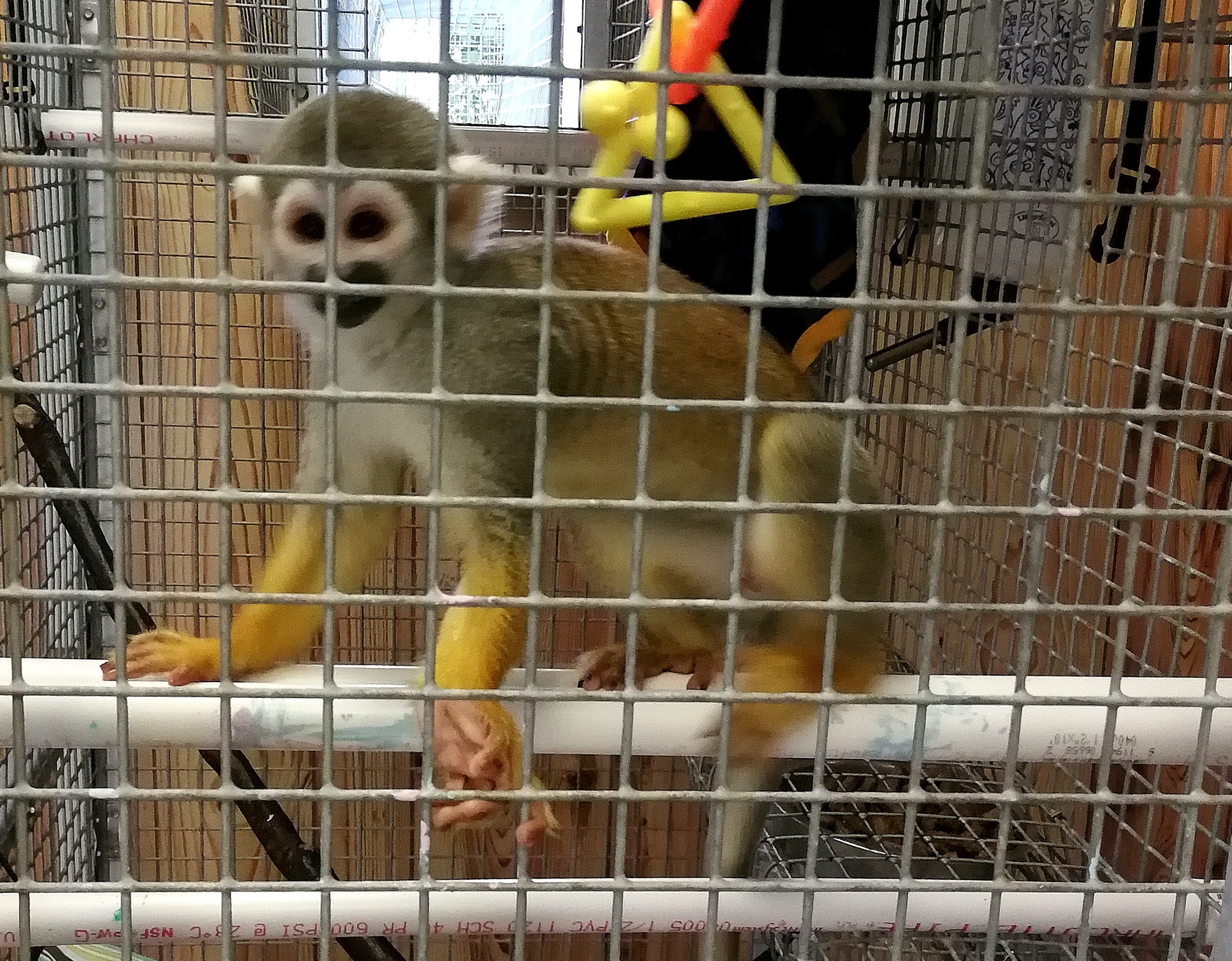
While I worked mostly with the capuchins and squirrel monkeys, on one of the days I got to experience a day with the marmosets and cotton-top tamarins. The latter are a critically endangered species of New World Monkey and the sanctuary call them ‘munchkins’ for a reason: they’re about the size of small grey squirrels. There are only 6000 of these guys left in the wild due to habitat destruction through forest clearing: the cotton-top has lost more than three-quarters of its original habitat to deforestation. The deforested land is used for large-scale agricultural production (i.e. cattle) and farming, logging, palm oil plantations etc. The illegal pet trade and scientific research also contribute to their endangered status.

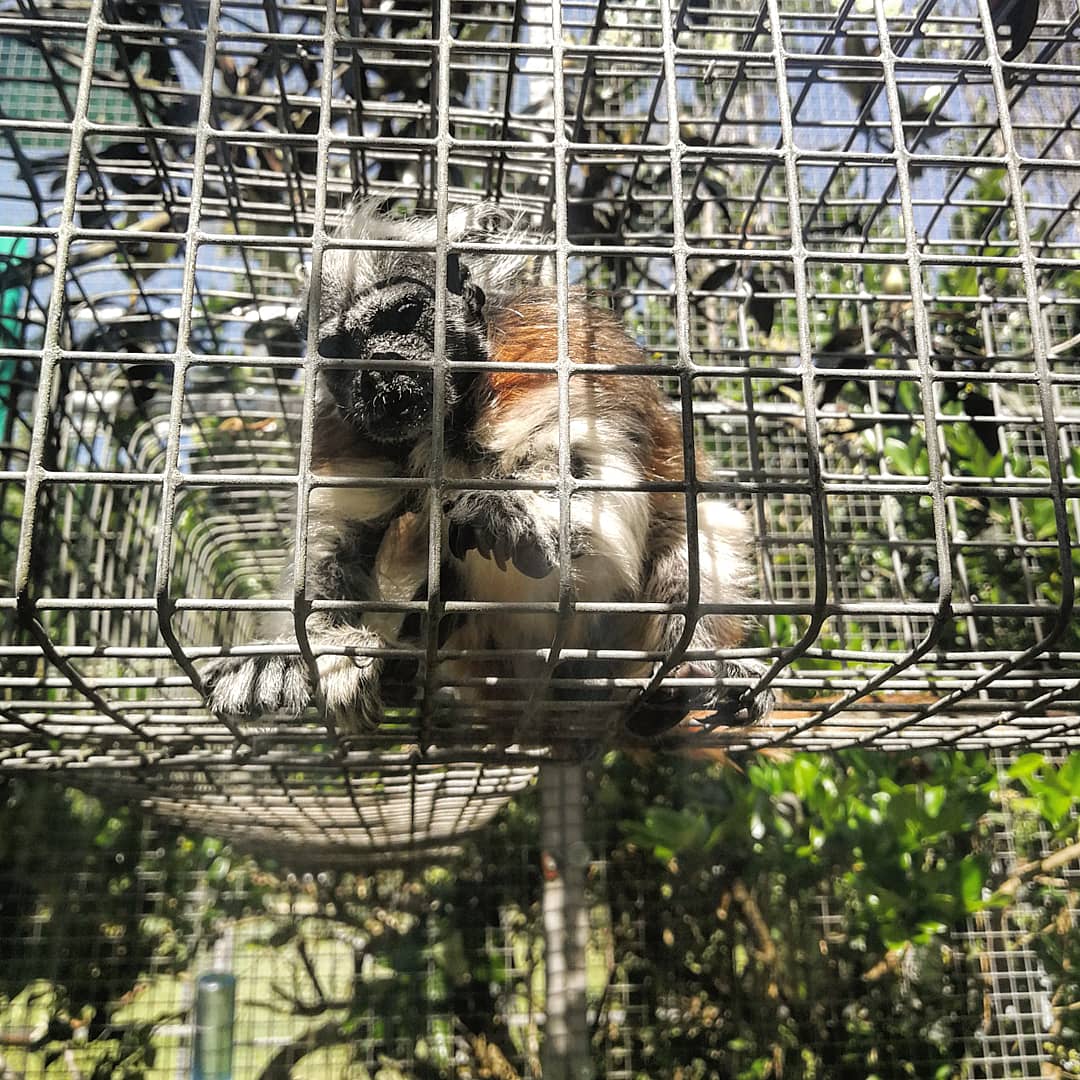
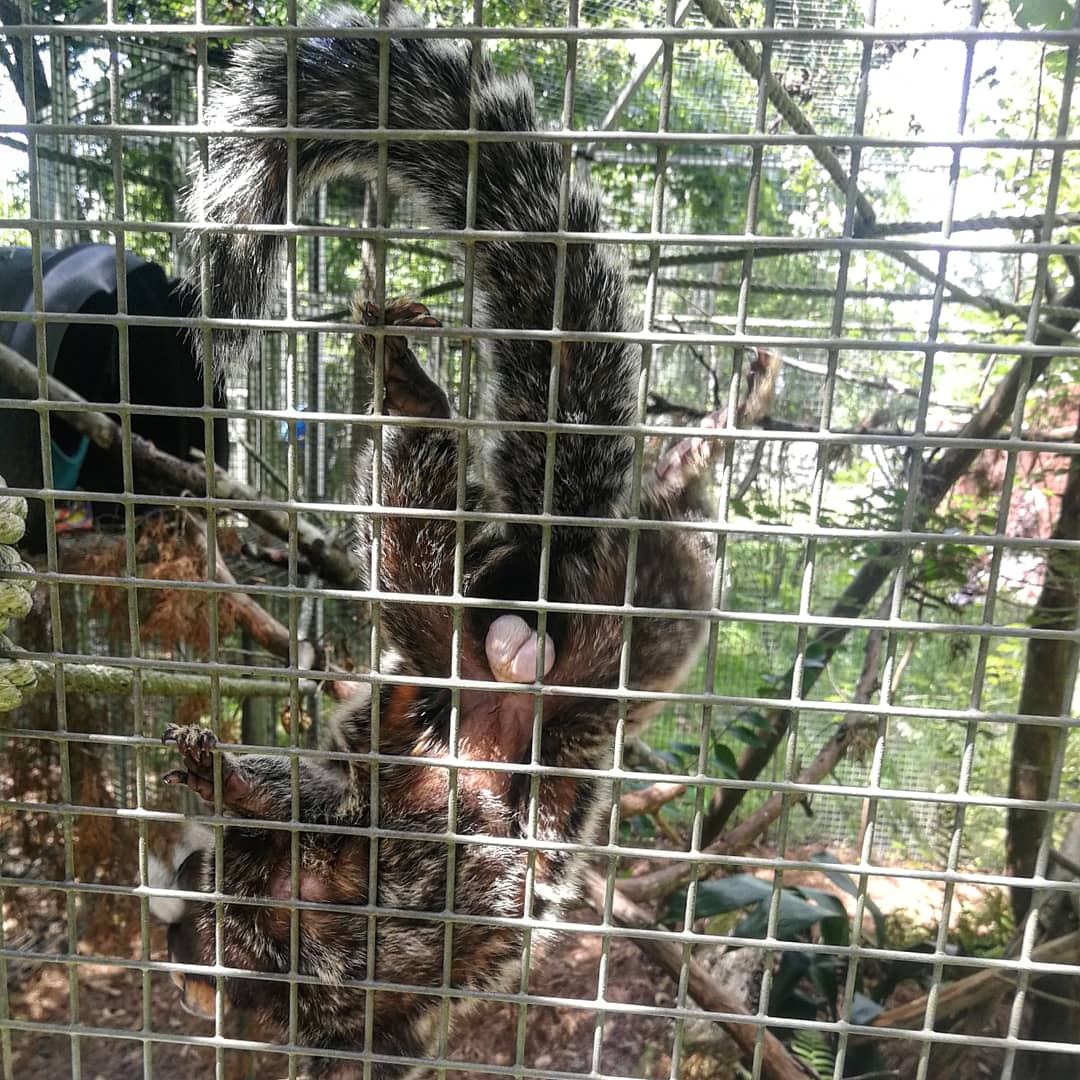
This video shows Captain Cuddles, one of 32 cotton-top tamarins that were brought to Jungle Friends after a research lab shut down. The lab named him, which might surprise you. Actually, most of the lab monkeys come with names, often very cutesy ones, making me wonder how it’s possible to affectionately name an animal knowing you’re going to facilitate medical research on him or her. A calcium deficiency has left Captain Cuddles with an odd bulldog-like stance but as you can see, he still gets around very quickly. He’s about 16 years old, which is middle-aged for a tamarin.
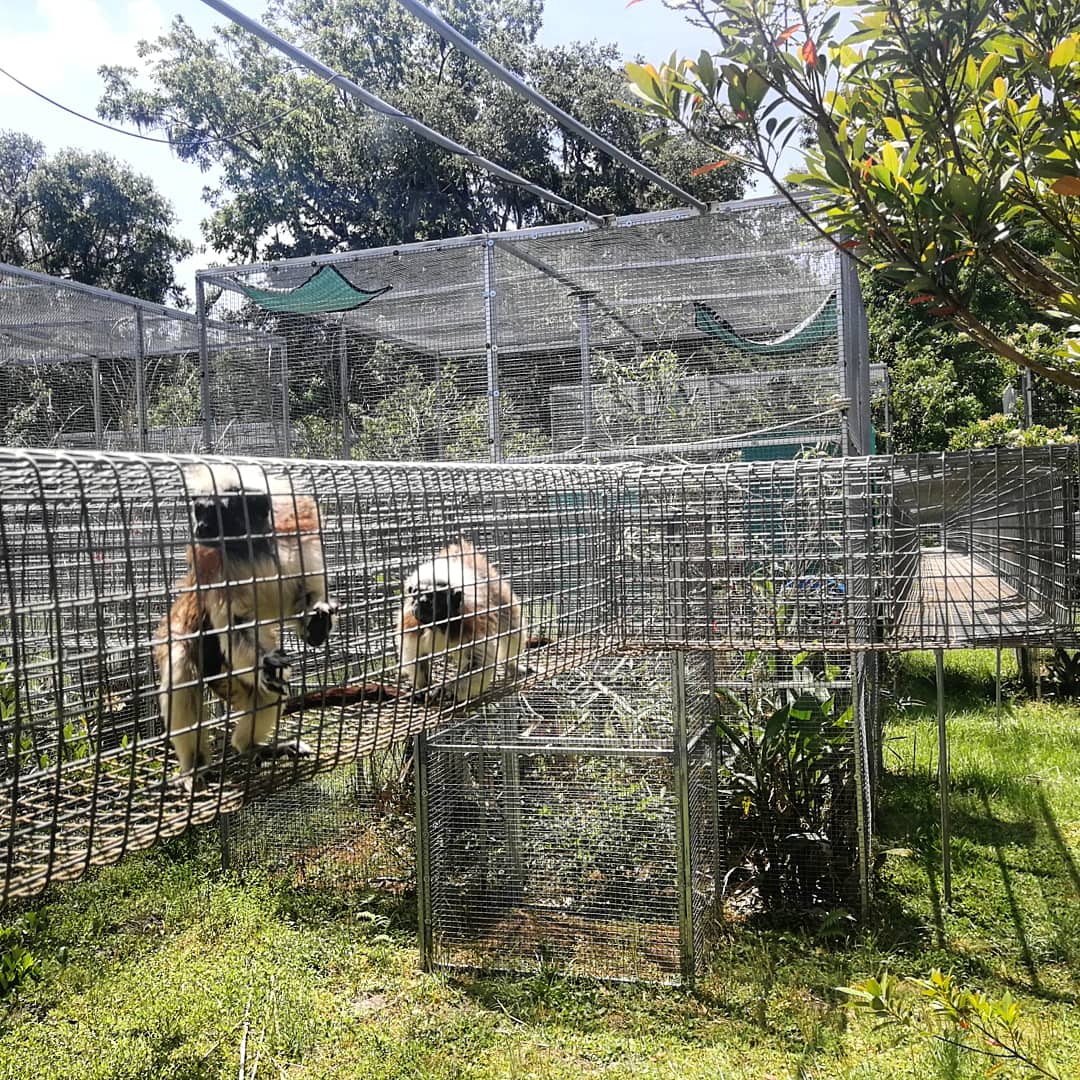
Jungle Friends isn’t just home to primates. There are also rescued birds, including macaw parrots and cockatoos, all of whom were pets before they arrived. Now they live in huge habitats with bird companions but, as you can see in the last video on this Instagram post, they still love interacting with humans! Cockatoos are the most incredible animals, I had no idea. Their voices are eerily human and their eyes glaringly intelligent.
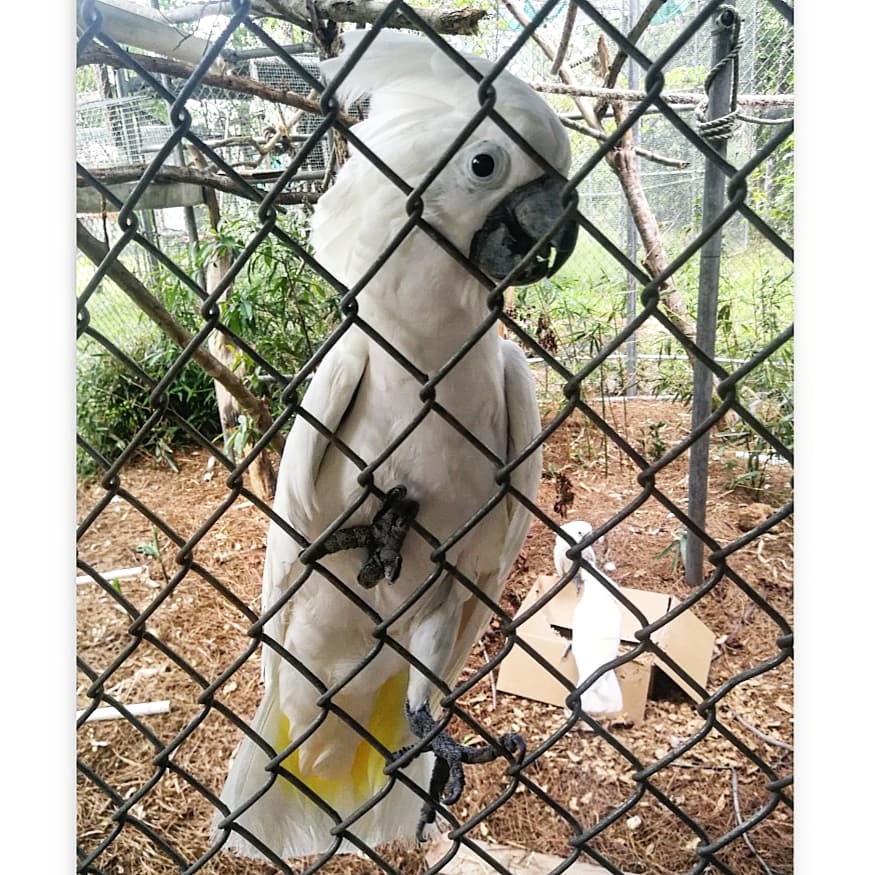
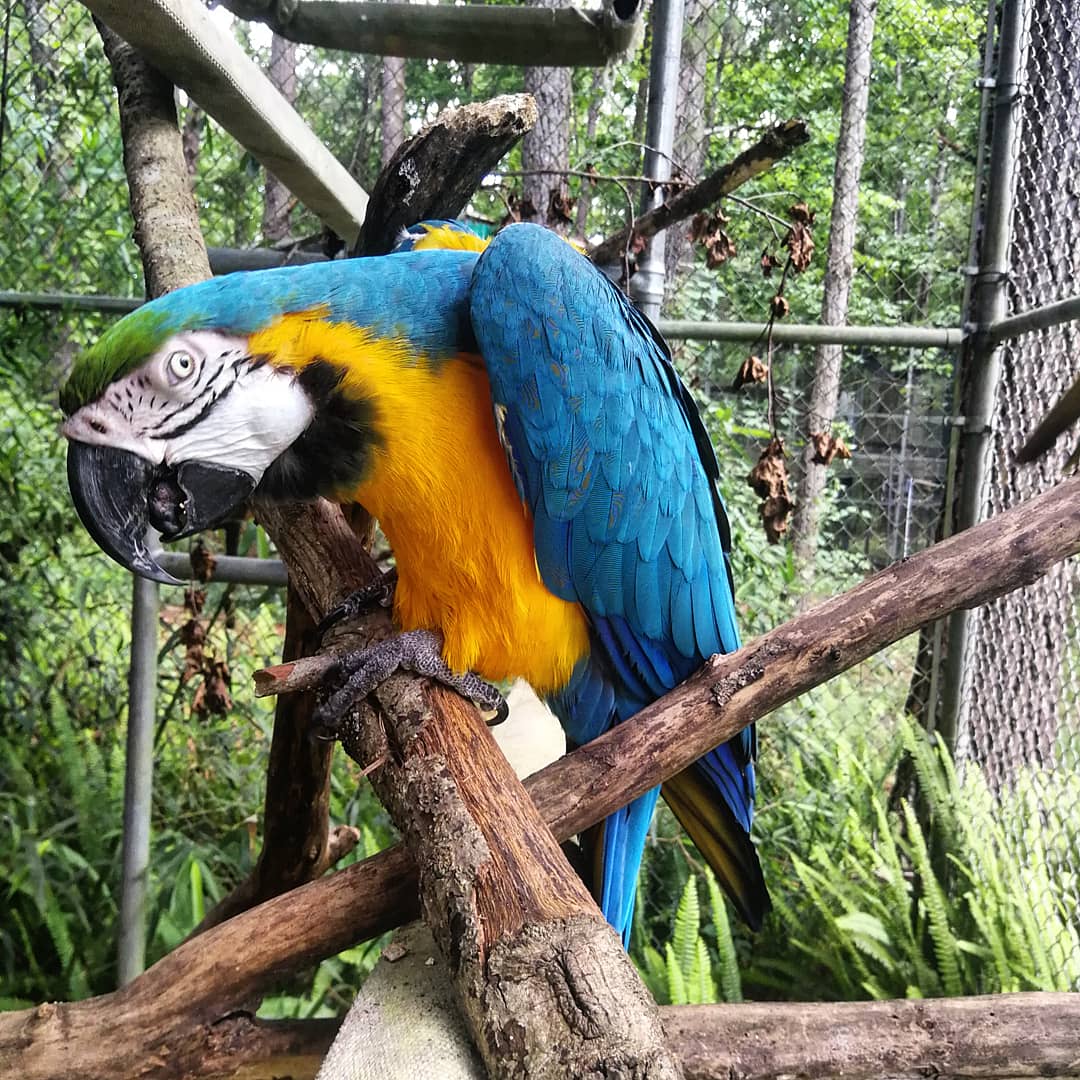
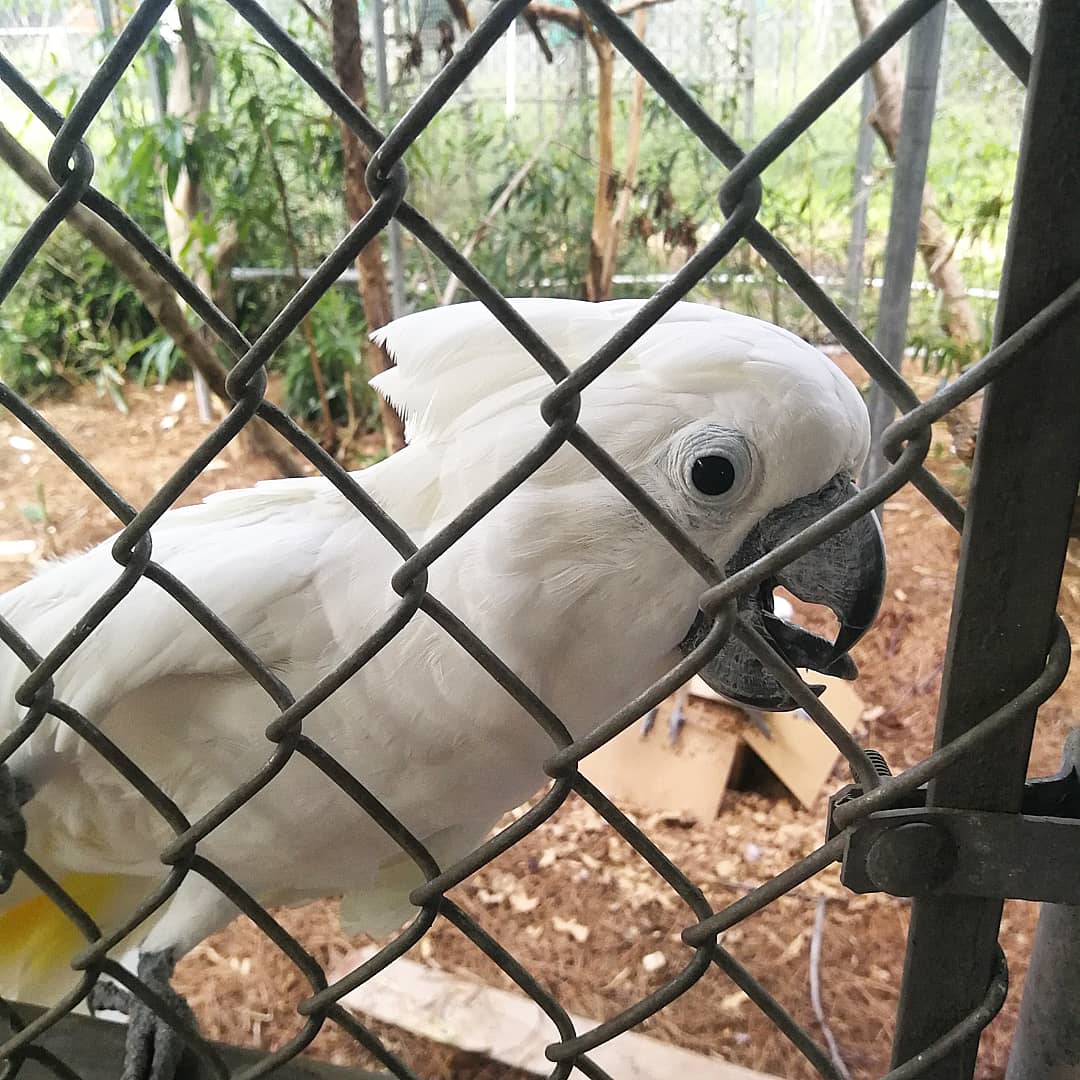
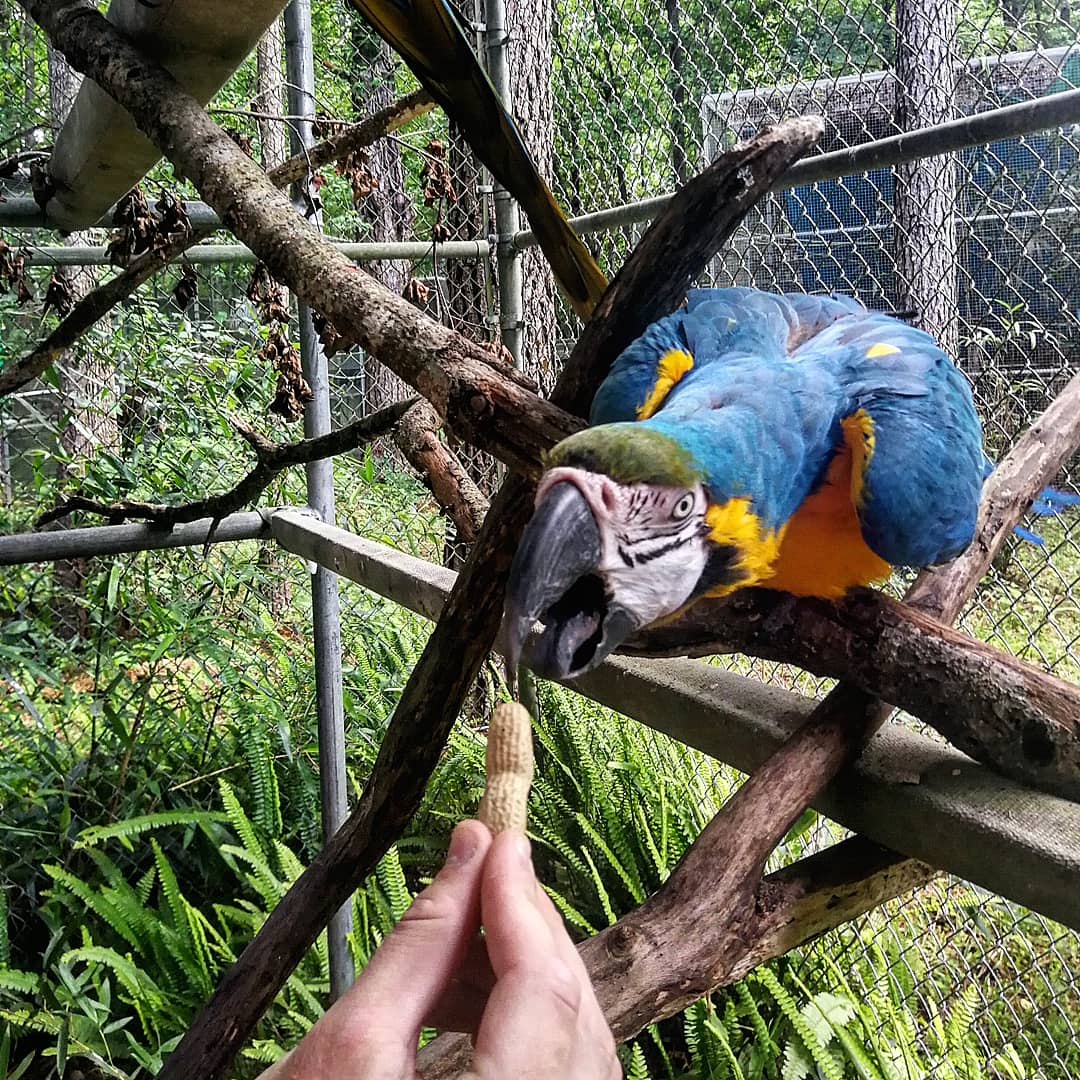
Daily life at the sanctuary isn’t just physically tough. Most of the monkeys have been through enormous trauma and hearing their stories while seeing the toil their abuse has taken on them can be hard. Take Cuzco, for instance. A Weeper Capuchin, he and his family were illegally caught in the wild in 2008. The five monkeys were packed into a wooden crate in Los Angeles without food or water and shipped via airmail to buyers in China. Because they lacked the proper documentation, Chinese officials were unable to let them into the country and instead sent the capuchins back to LA. When the crate finally arrived back in America, Cuzco was the only monkey left alive: he literally had to eat his family to survive. San Diego Zoo adopted him and took care of him for seven years, before they realized that this traumatised ccapuchin would be better suited to a quieter life at Jungle Friends.
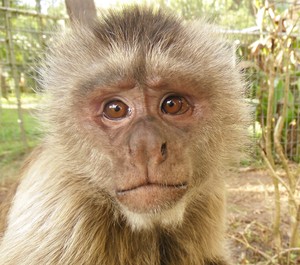
Then you have Wendell, the capuchin you can see second in this video I took on my penultimate day at Jungle Friends. Wendall arrived at Jungle Friends by way of another sanctuary and was severely diabetic, leading him to become blind. His diabetes is now carefully managed through medication and diet and he’s one of the sweetest monkeys here. In the video you can see him offering his hand, as he does to everyone he meets. Another monkey who really tugged at my heartstrings was Puchi, a capuchin rescued after he was in a fire. He lost an eye and all his fur, and the sanctuary thinks he’s over 50 years old. Like a lot of the older monkeys, he has a special diet with extra good stuff, in a shallow bowl that he can reach more easily.
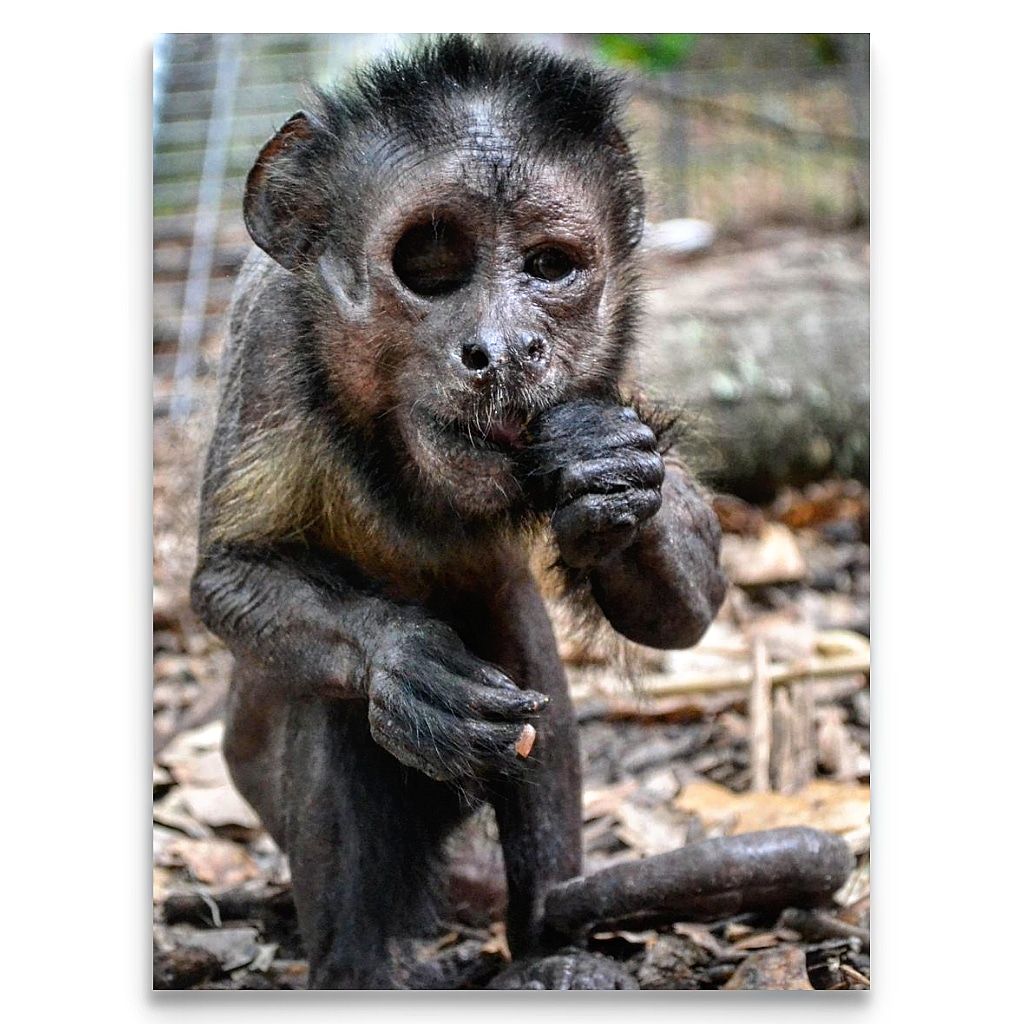
While I was at Jungle Friends, one capuchin was getting a lot of special attention: Draven, a brown capuchin who arrived at Jungle Friends in March. Draven was a pet monkey who was an undiagnosed diabetic and he’d been self-harming, causing a brutal exposed wound on his forearm. One of the tasks I had was to take on a few monkey-sitting shifts, as Draven had to be watched 24/7 to ensure he didn’t pick at his arm and reopen the wound. He has the most expressive, human-like face I’ve ever seen: Jude from A Little Life in monkey form.
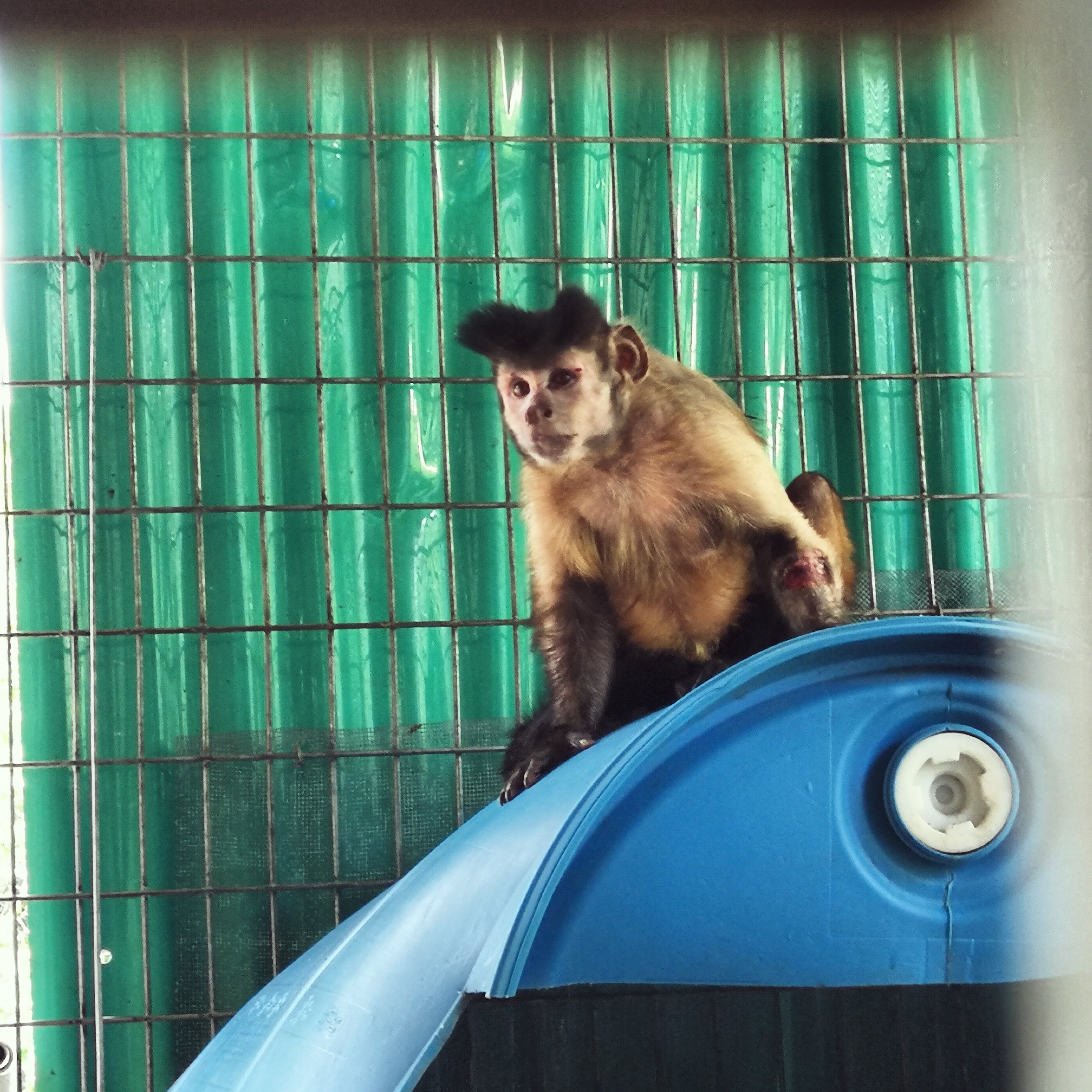
There are also monkeys who have suffered in the name of ‘science’. The ‘Ironmen‘ capuchins for instance, came from iron-toxicity studies and endure long-term health consequences, physical and mental. Kept alone in tiny cages for most of their lives, at Jungle Friends they’re finally able to live out the rest of their time in comfort and companionship. The sanctuary work cooperatively with a national network of other credible animal sanctuaries, government agencies, other primate and animal protection organizations, and qualified individuals to find placement for unwanted or retired monkeys like the Ironmen, and to combat the exploitation and mistreatment of captive primates. This was one of the aspects that appealed to me most when I chose Jungle Friends to volunteer at, as there are a lot of ‘faux’ sanctuaries out there that are really more like zoos. It was reassuring to have to complete a lengthy form about my motivations and ethics, as well as provide authoritative references, as part of my application. Accredited by both the American Sanctuary Association (ASA) and The Global Federation of Animal Sanctuaries (GFAS), and a member of the North American Primate Sanctuary Alliance (NAPSA), Jungle Friends isn’t somewhere you go to take monkey selfies – not least because the monkeys would almost certainly steal your phone! The videos I’ve linked to in this post were all taken in my final days, when I’d got the lay of the land, and I knew not to get too close. That said, on my first day two capuchins stole my hard hat and, with satisfying symmetry, managed to do it again on my last day too – so I obviously hadn’t learned my lesson that well!
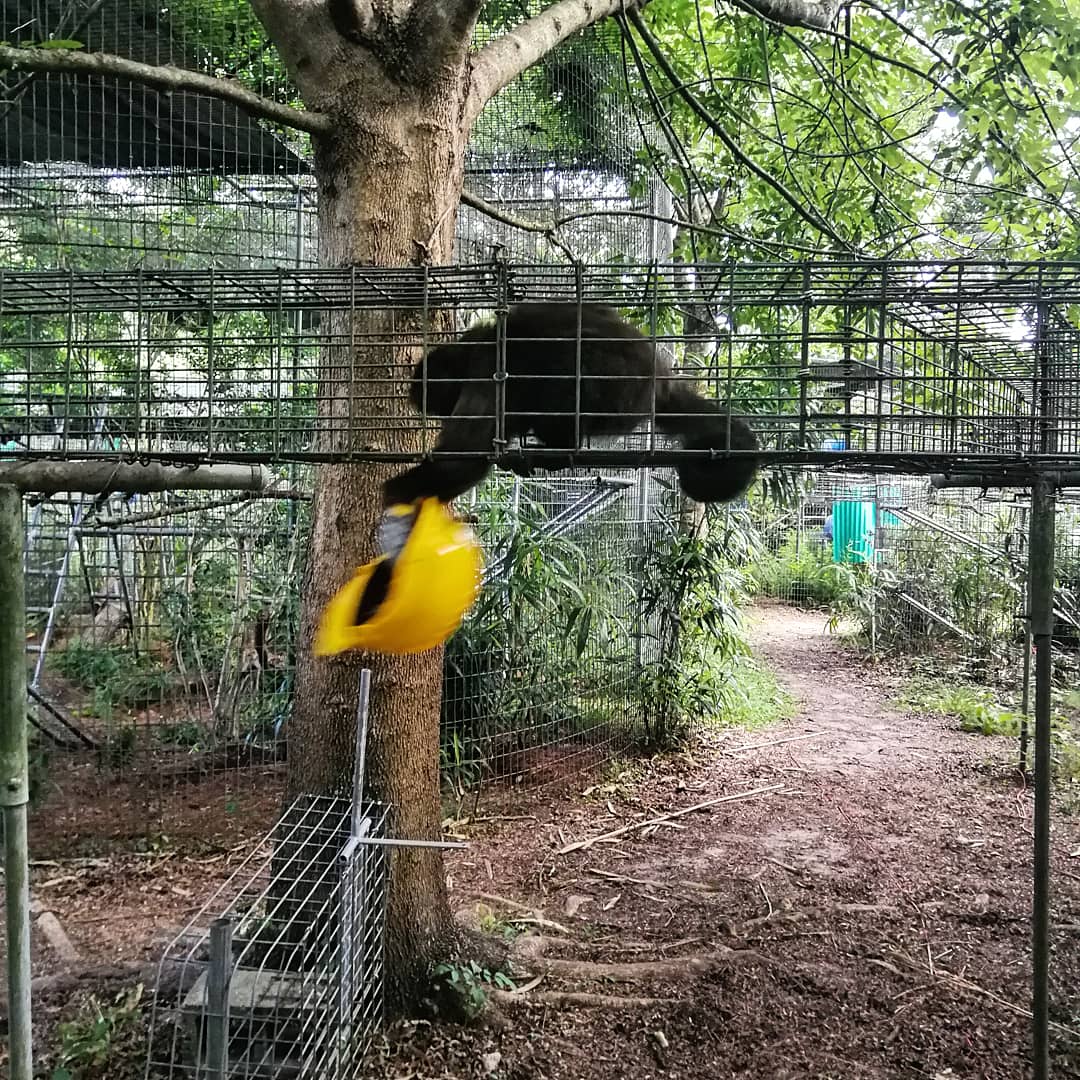
My last day at Jungle Friends happened to be my birthday and I was matched with the monkey who was born on the date closest to me. My Birthday Buddy was Goldie, a ‘pet’ black-handed spider monkey who came to the sanctuary when her owner went through a divorce. She’s the matriarch of her troop and Jungle Friends describe her as “a spunky girl with a mischievous sense of humor and an infectious belly laugh”!
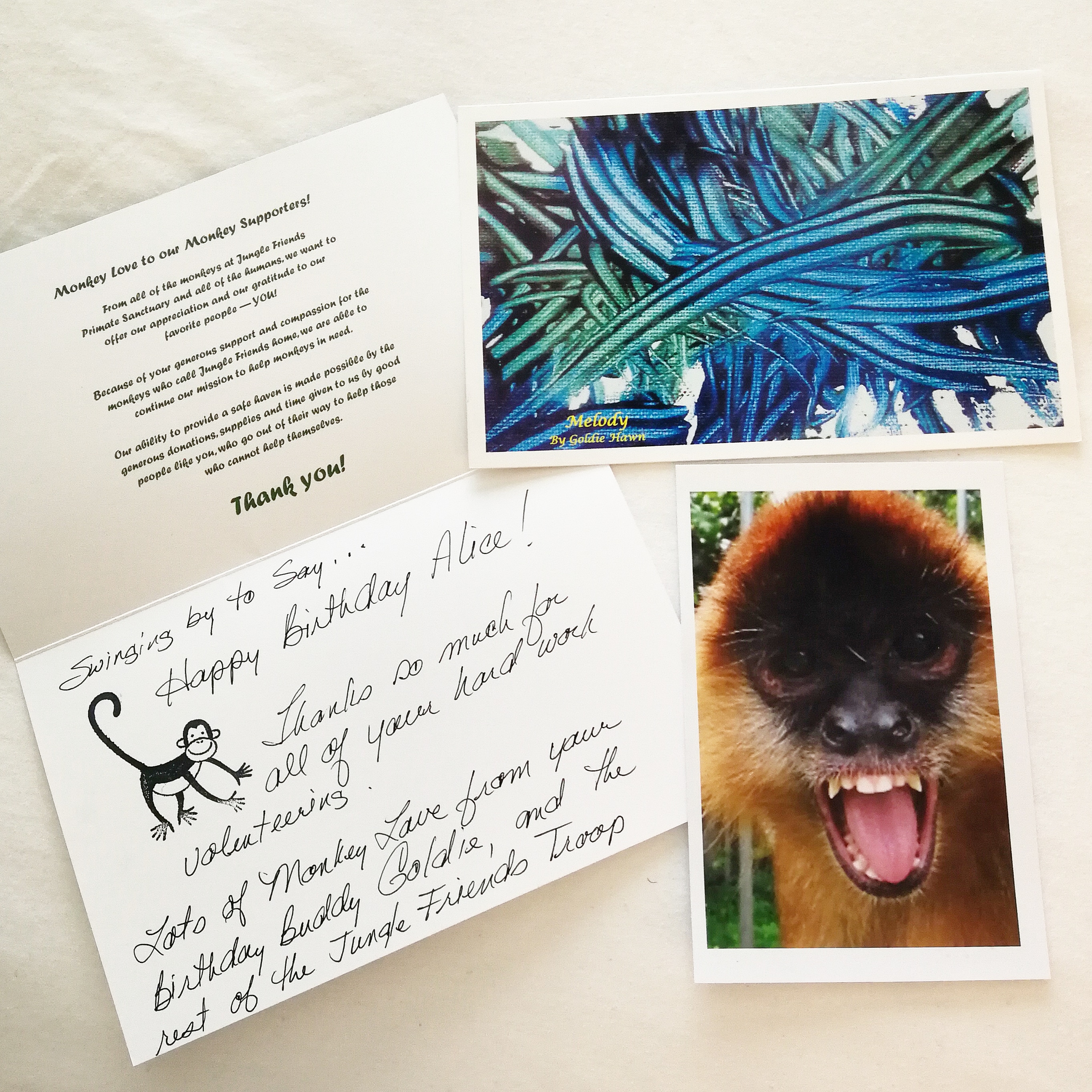
I’d always wondered if I’d be happiest sacking off my comfortable day job and going to work with rescued animals full-time. Now I know I’m not cut out for it: despite the magic of getting to know the monkeys, I finished my fortnight exhausted, more than ready to nurse my horsefly bites and get back to my desk job. However I have more admiration than ever for the people who are brave and selfless enough to sacrifice a comfortable 9-5 to improve the lives of animals who have nobody else. The people who know over 160 capuchins by name and personality, who sit up 24 hours to make sure a damaged monkey doesn’t self-harm, who work dawn til dusk to make sure every primate is fed not just their complete biscuit diet, but ‘enrichment’ like fruit, veg and medication. I’m in awe of these people, without whom all the academic work on ‘animal rights’ or ‘animal welfare’ in the world would be meaningless. Love you, Jungle Friends – you’re all rock stars!
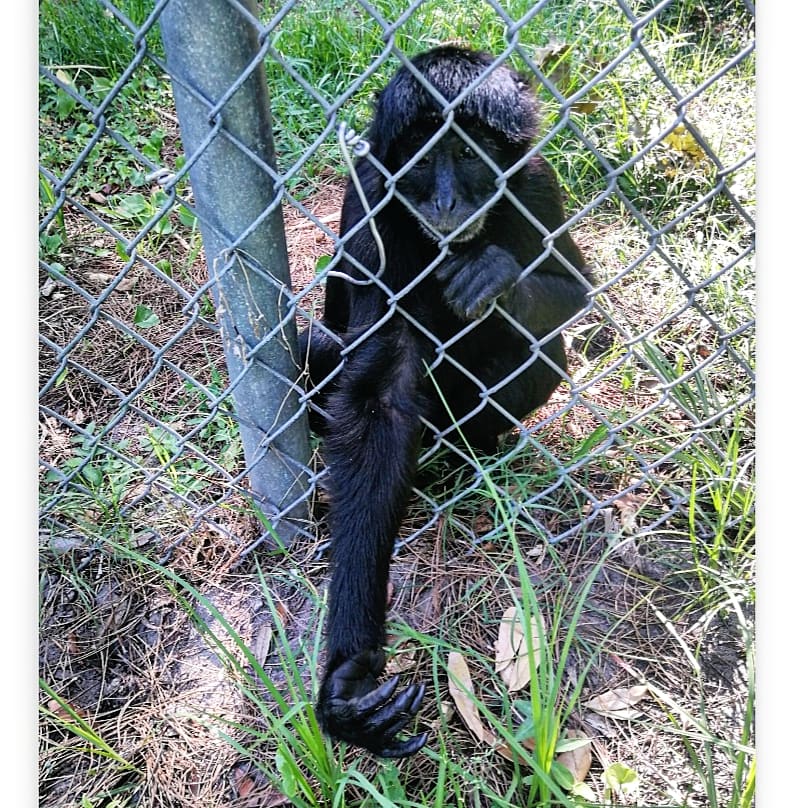
You can support the sanctuary by donating, sponsoring a monkey, or supporting the monkeys’ medical funds.
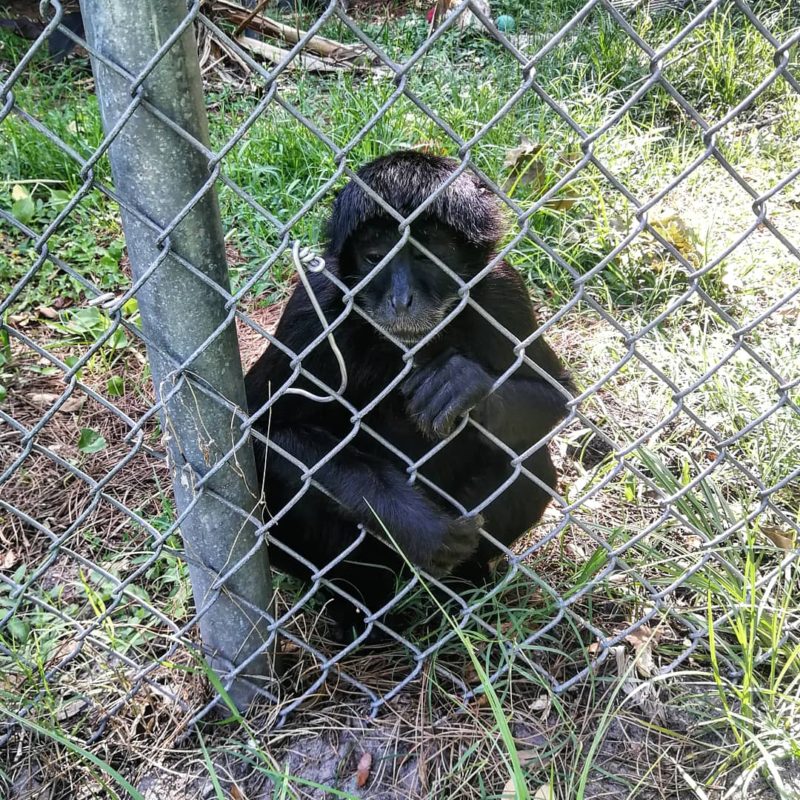
OH Alice, that was an amazing read. We miss you and hope you return soon and often.
Dear Alice, It was such a pleasure having you here at the sanctuary and thank you so much for blogging your experience! Lots of monkey love, Kari and the monks
Wow Alice reading about your time at Jungle Friends I could feel myself there. My wife and I spent 5 days volunteering in Feb 2019. It was an incredible experience. Kari and the staff their dedication of the primates care and happiness was so evident it spilled over to us. You wrote “I’m in awe of these people”, that was our take away. We will be back and help where we are needed, they always can use help.
Thank you so much for commenting, Bob – I absolutely agree about going back. I miss my monkey (and human) friends already!
Really nice blog post about Jungle Friends Primate Sanctuary. I love this place.
What a wonderful description of your experience. I recognized your photos of Draven. I am his human, thank you for helping him to not pick his wound. I am also a Birthday twin of Goldie Hawn. If you go back Draven will remember you, he never forgets anyone, he’s s a special boy.